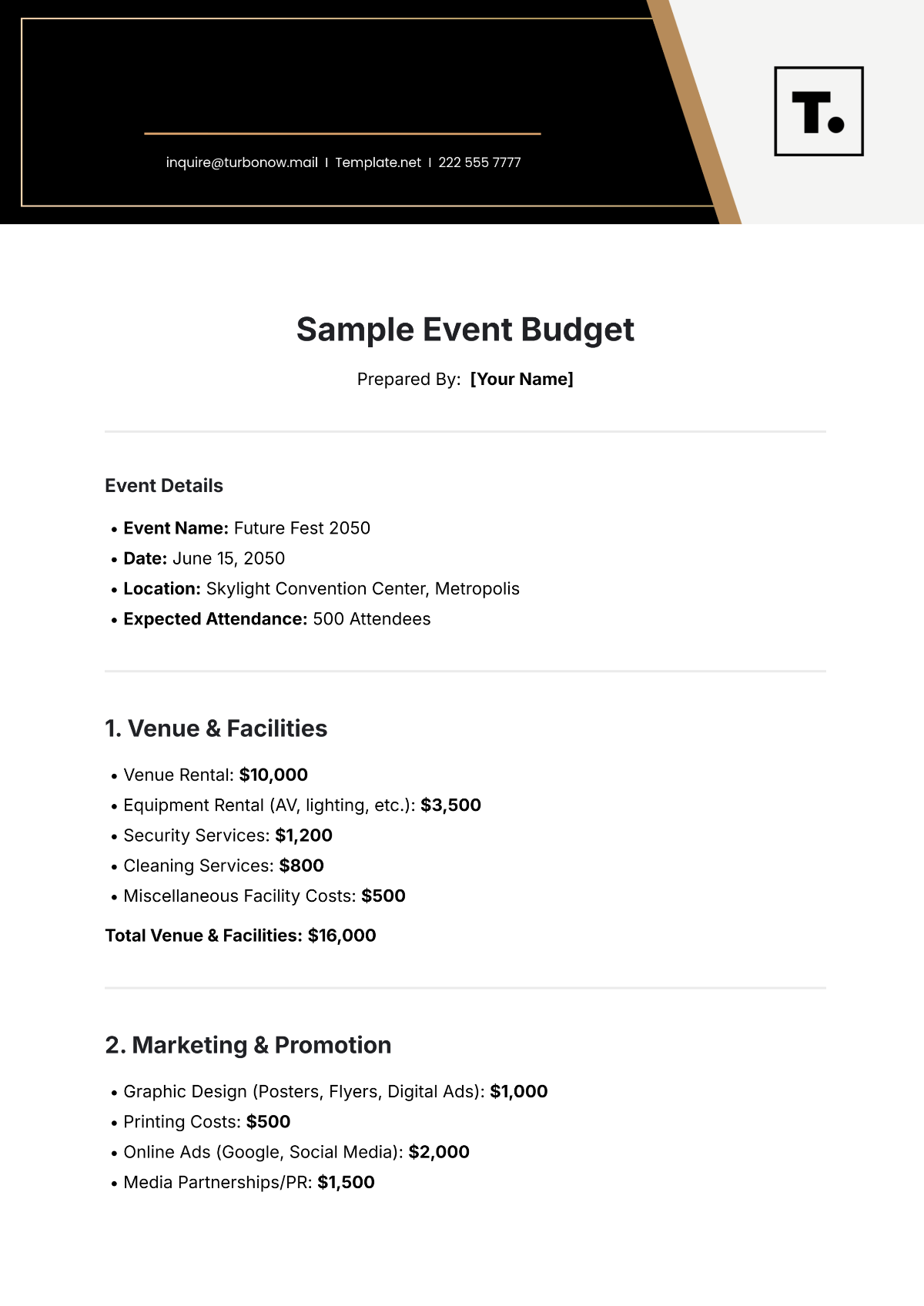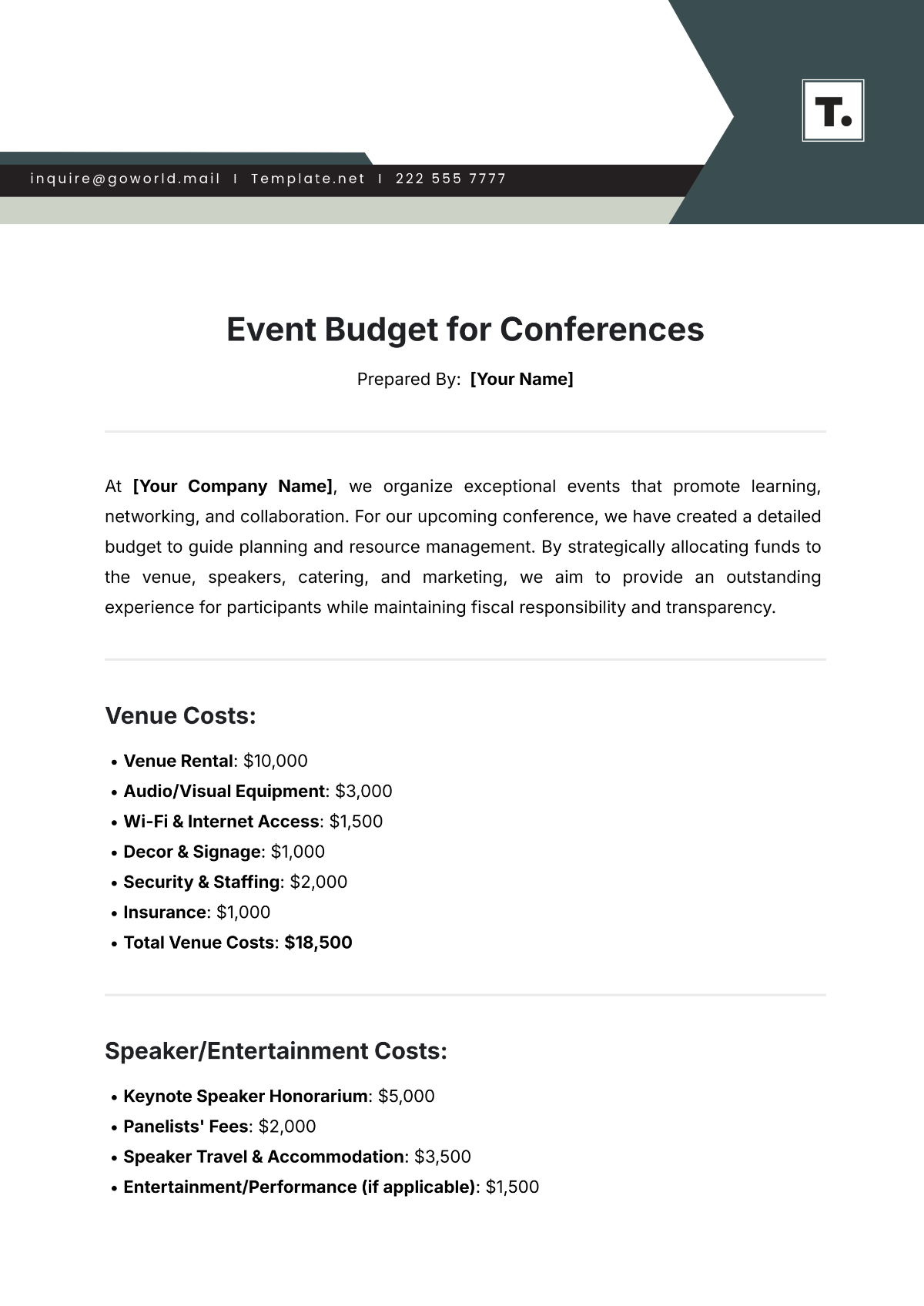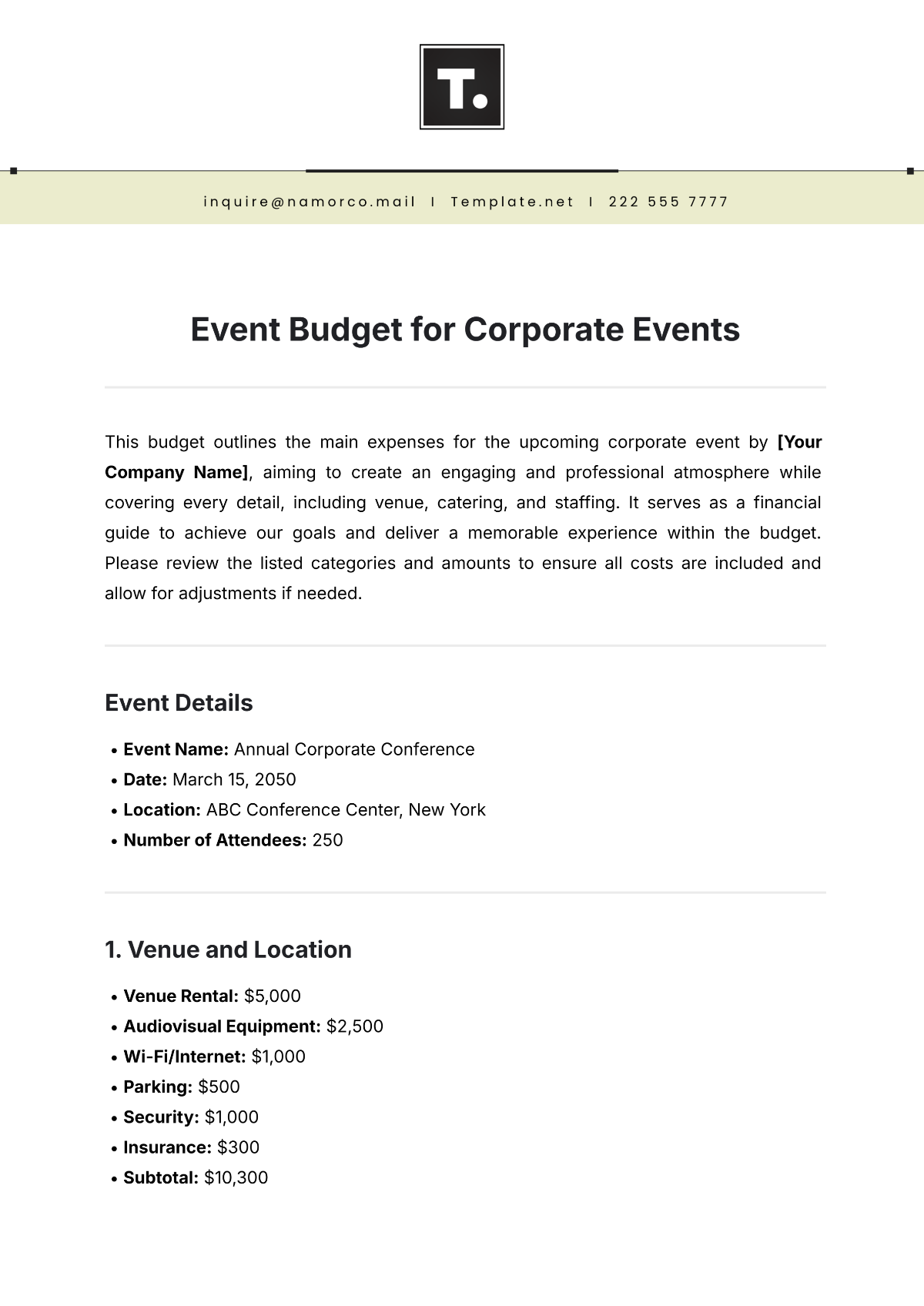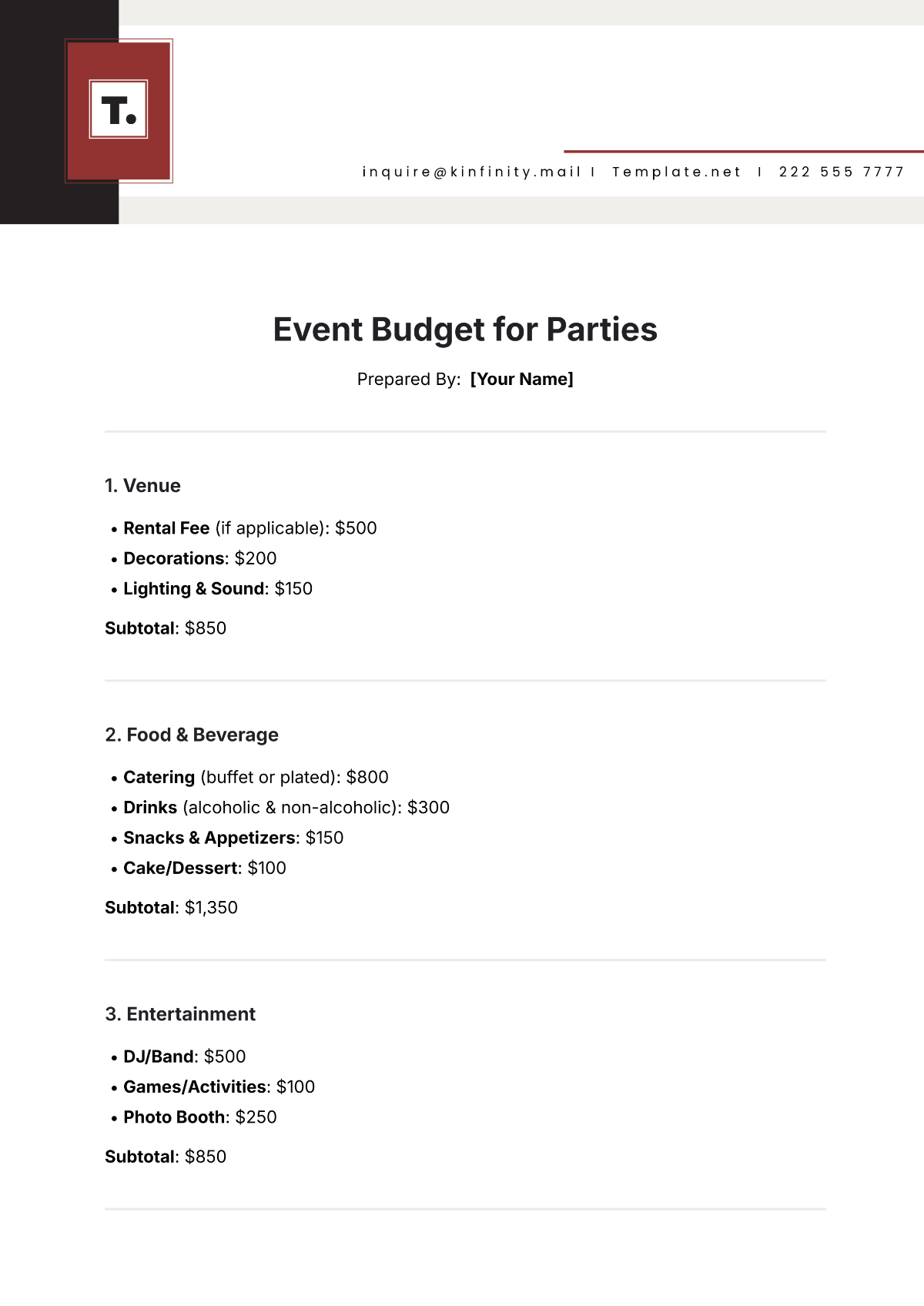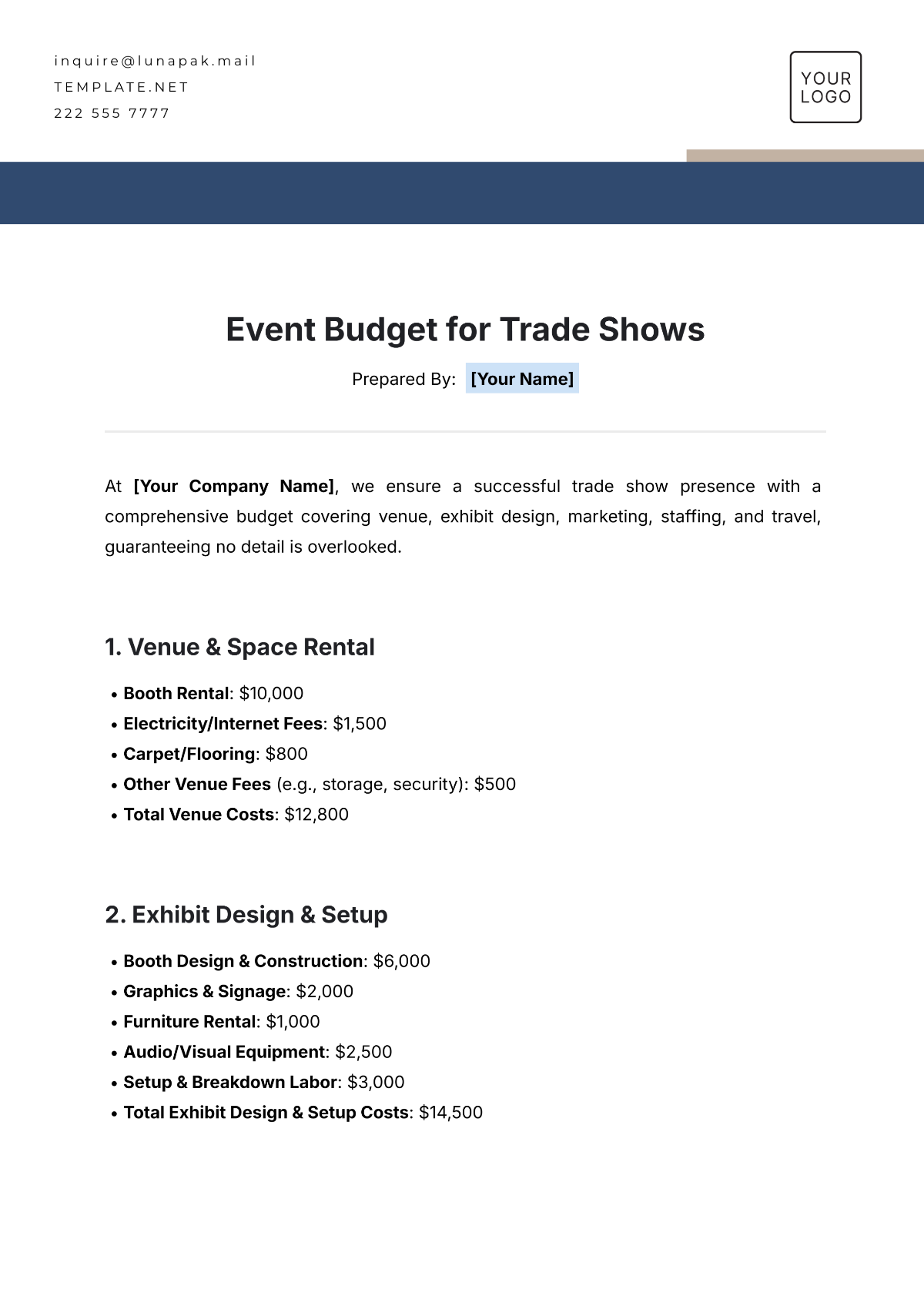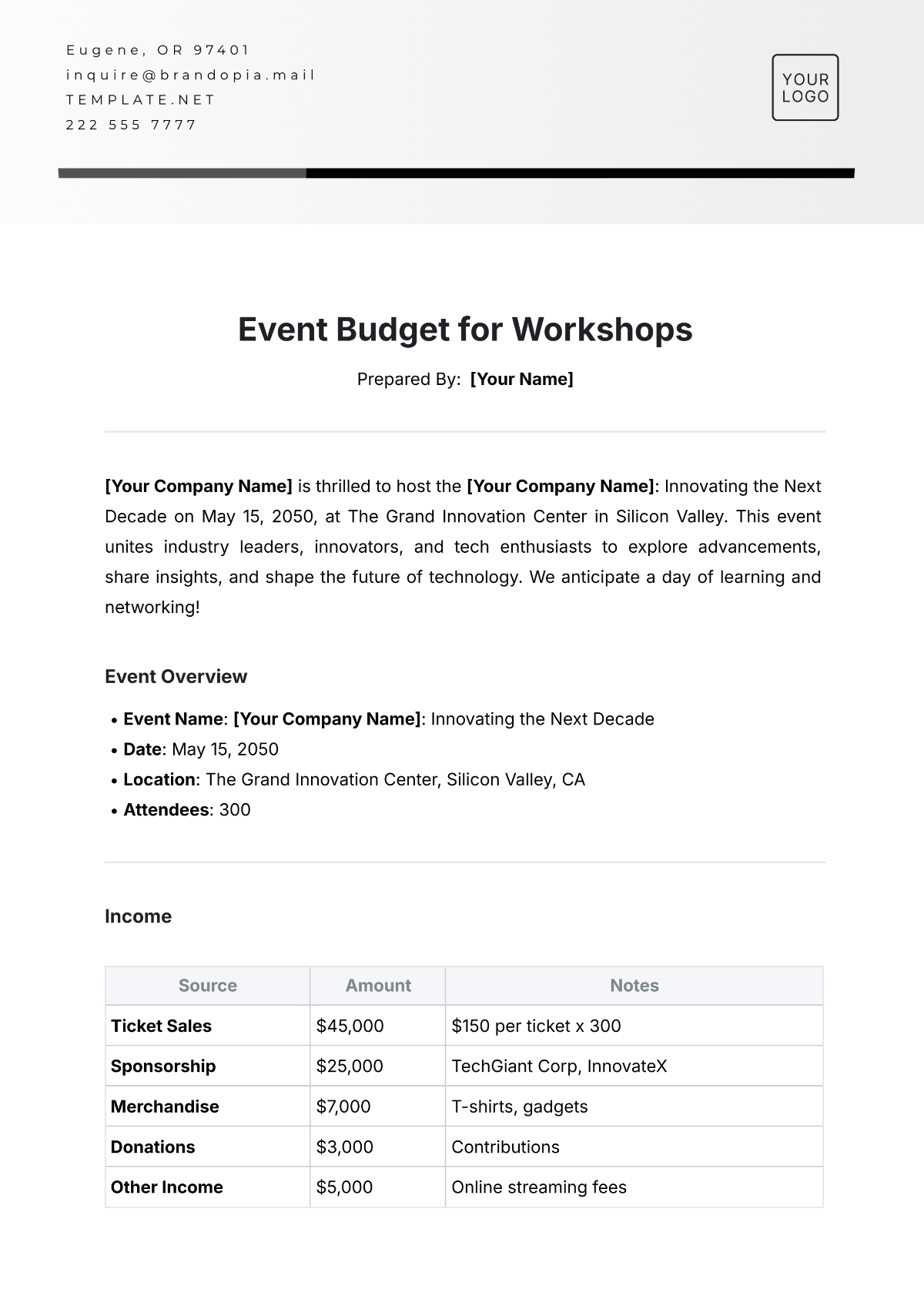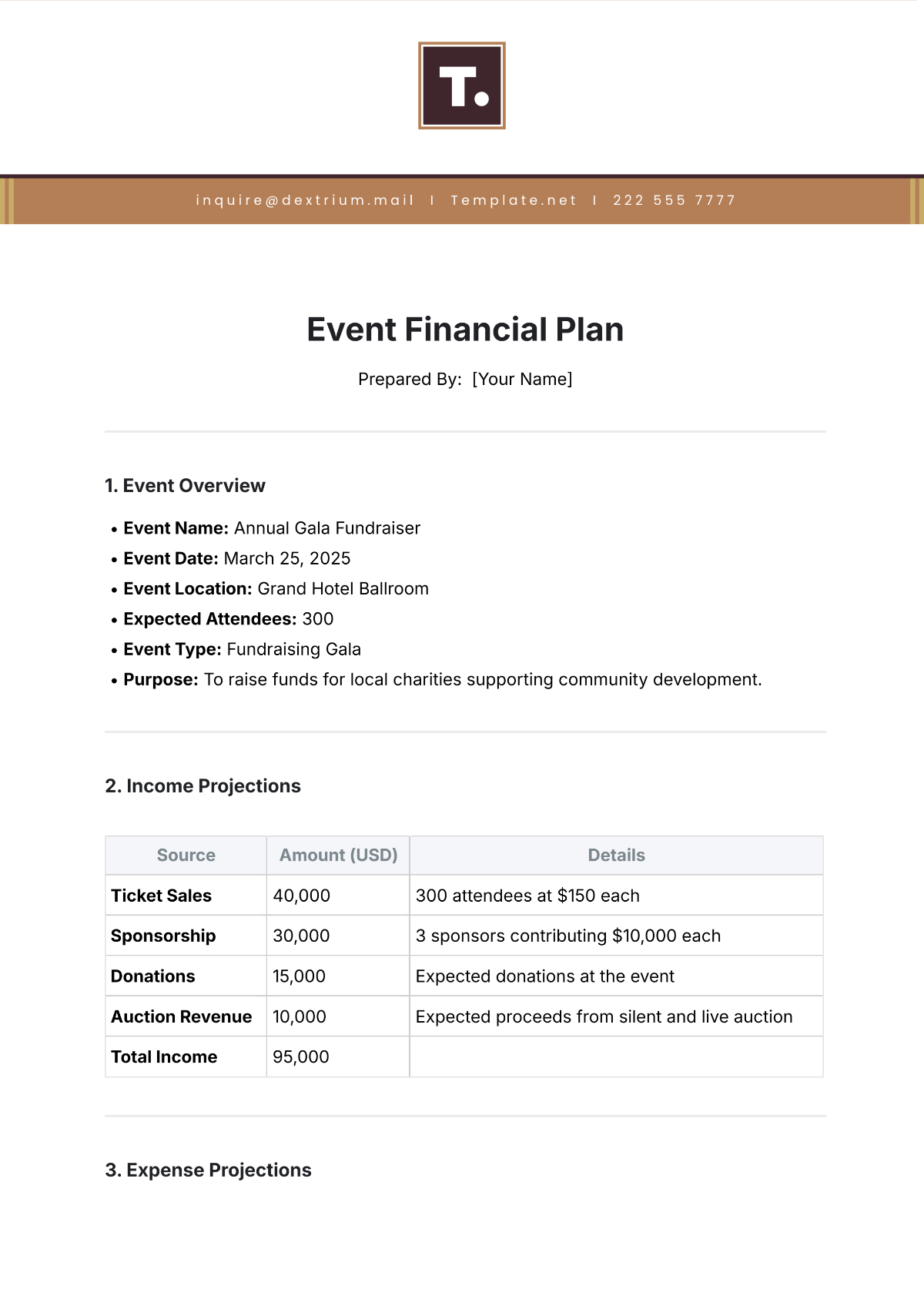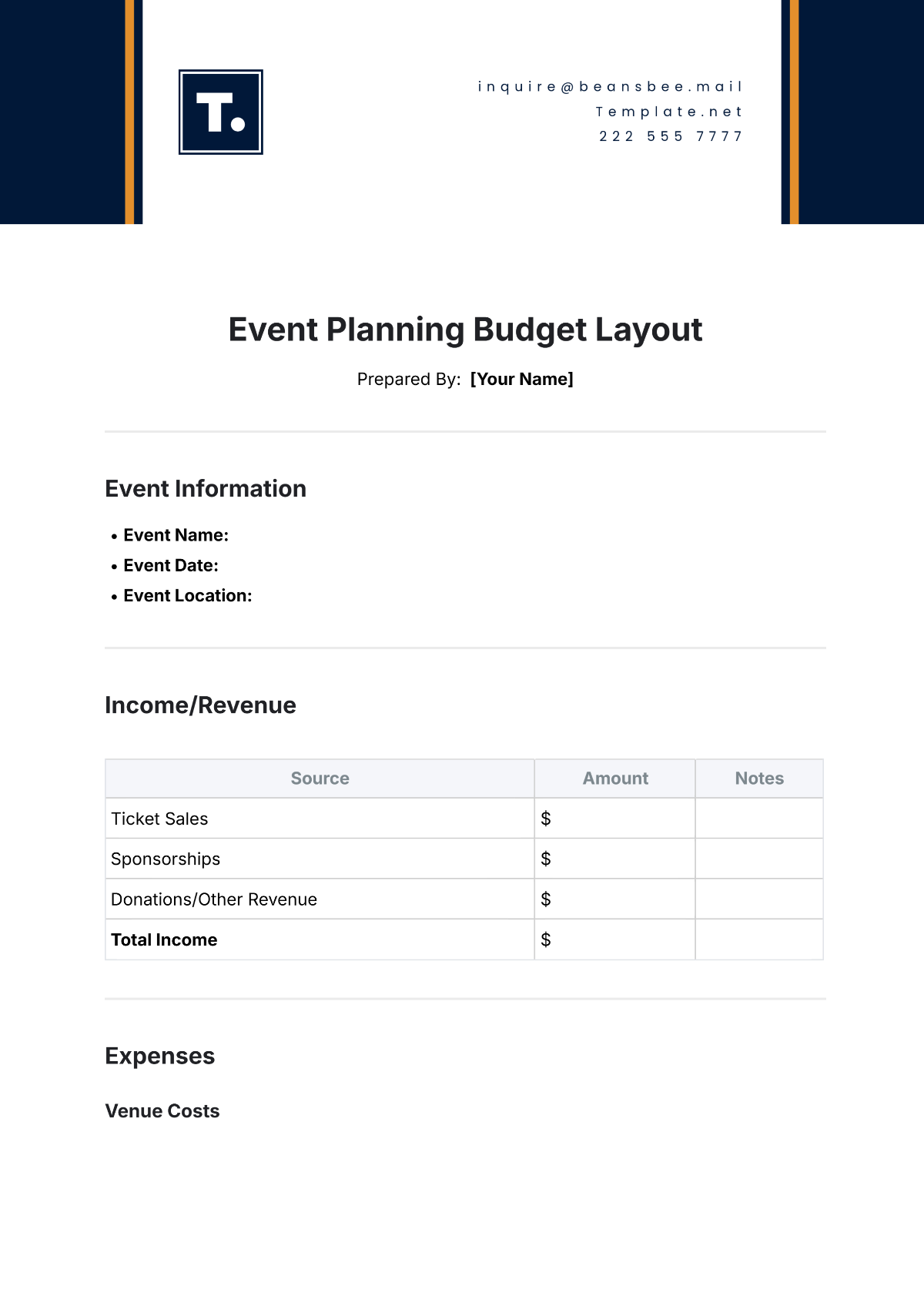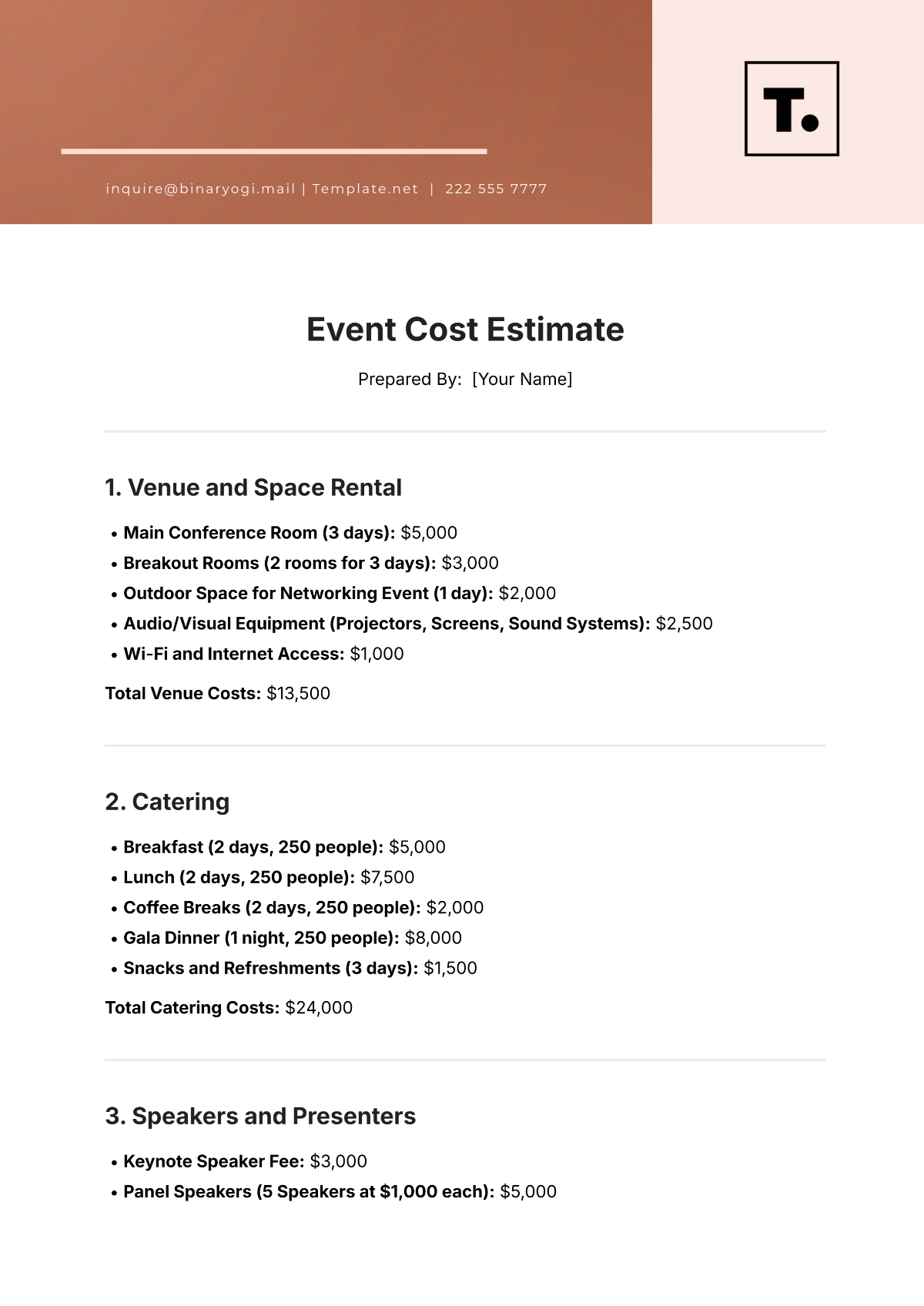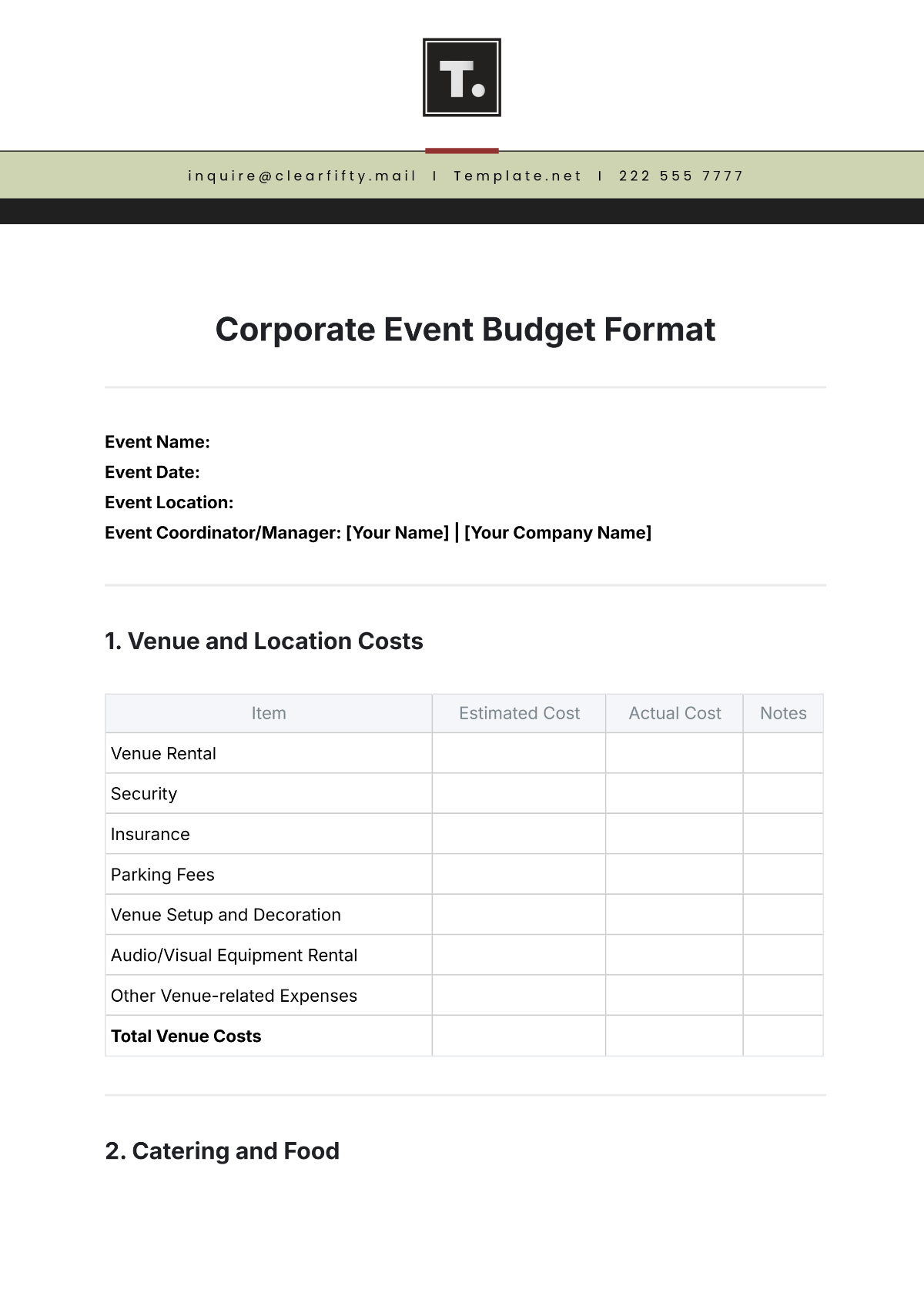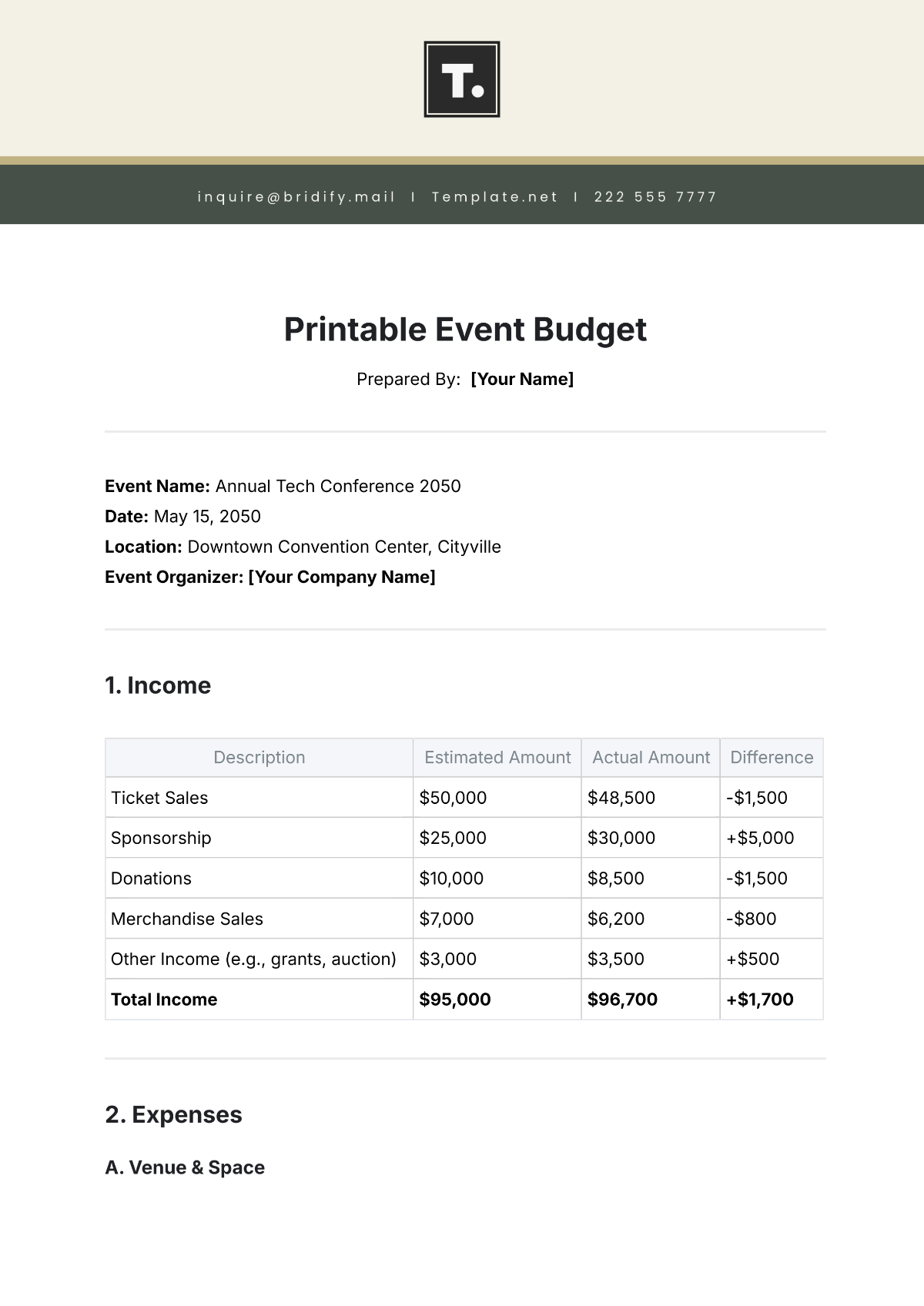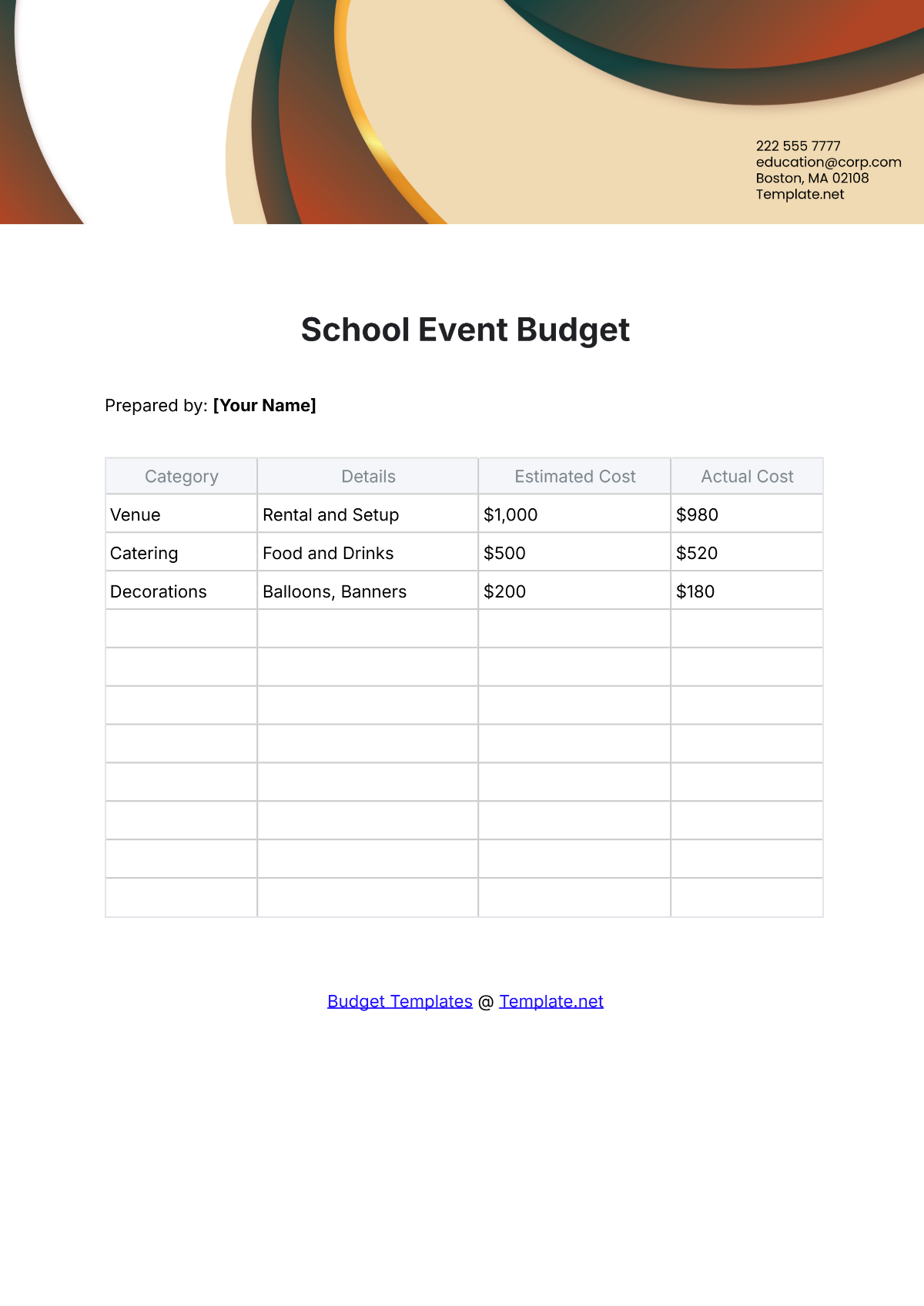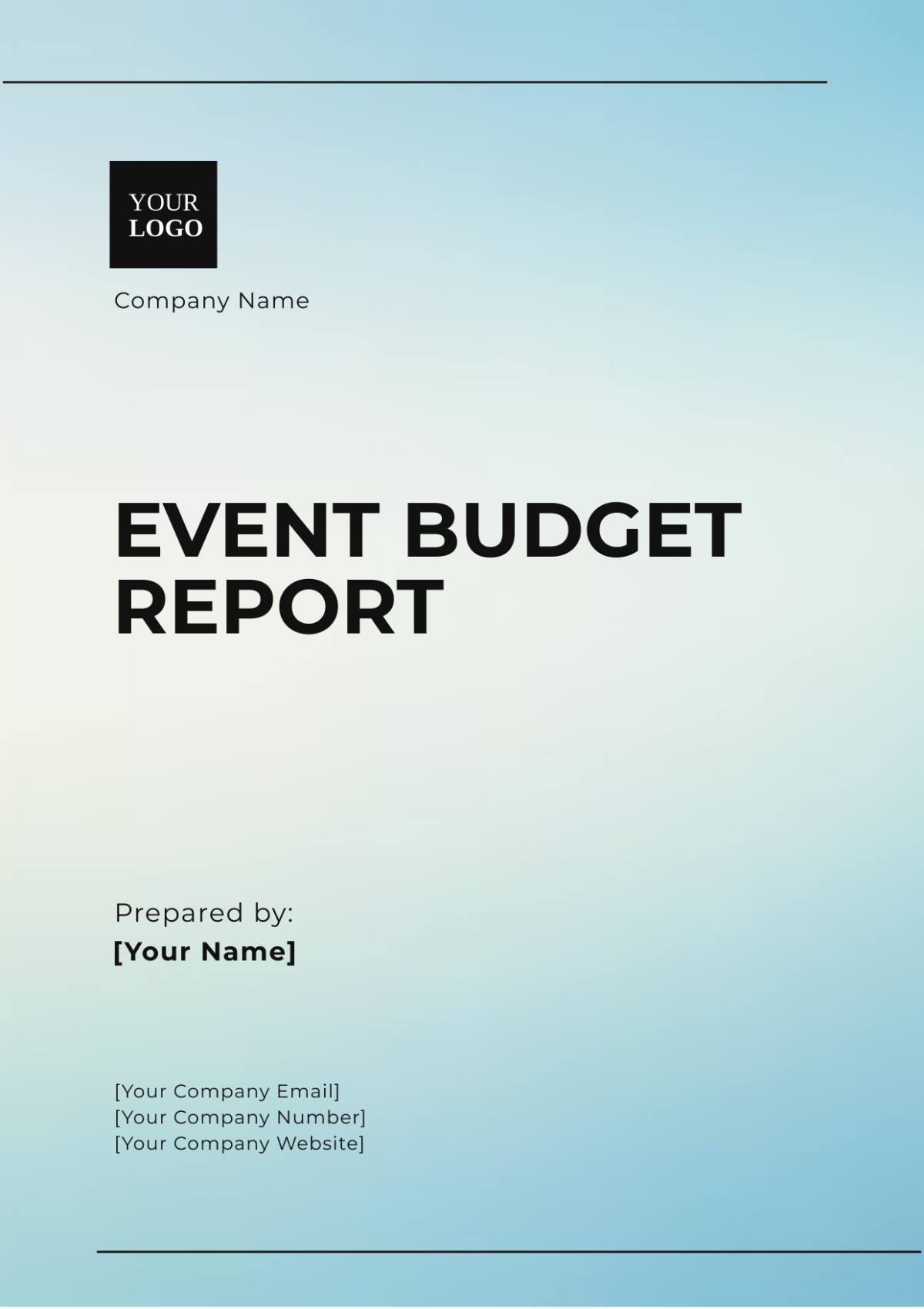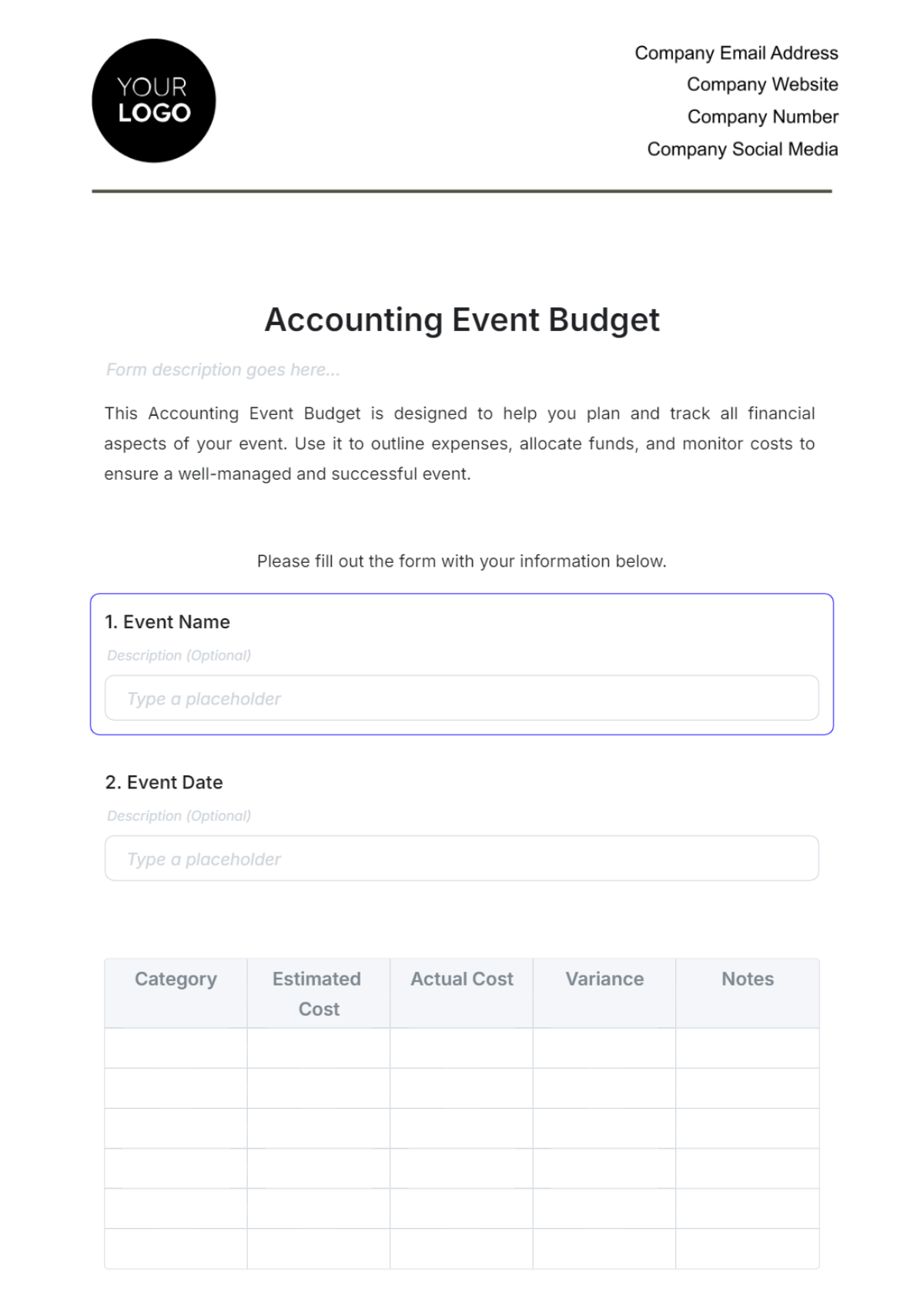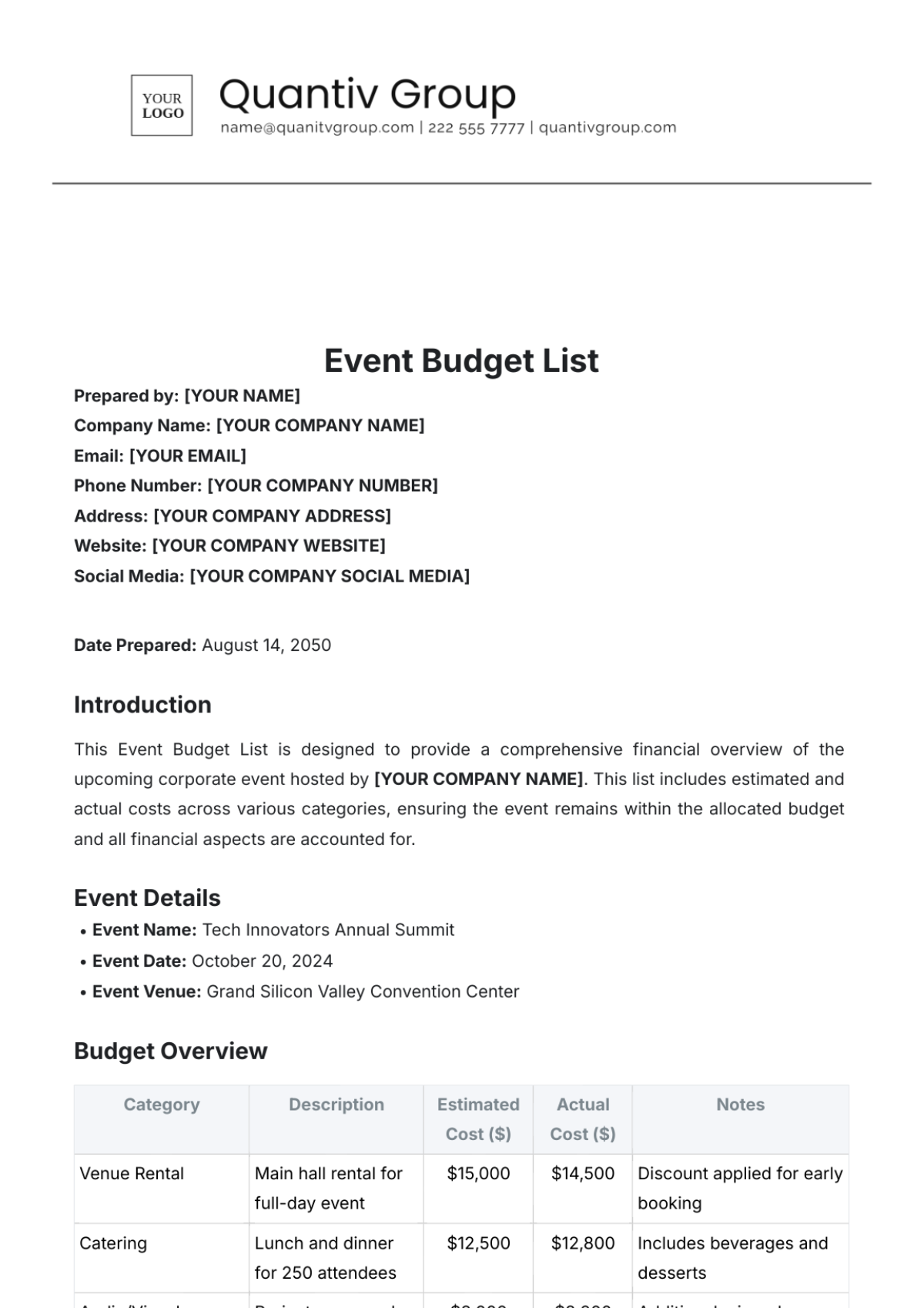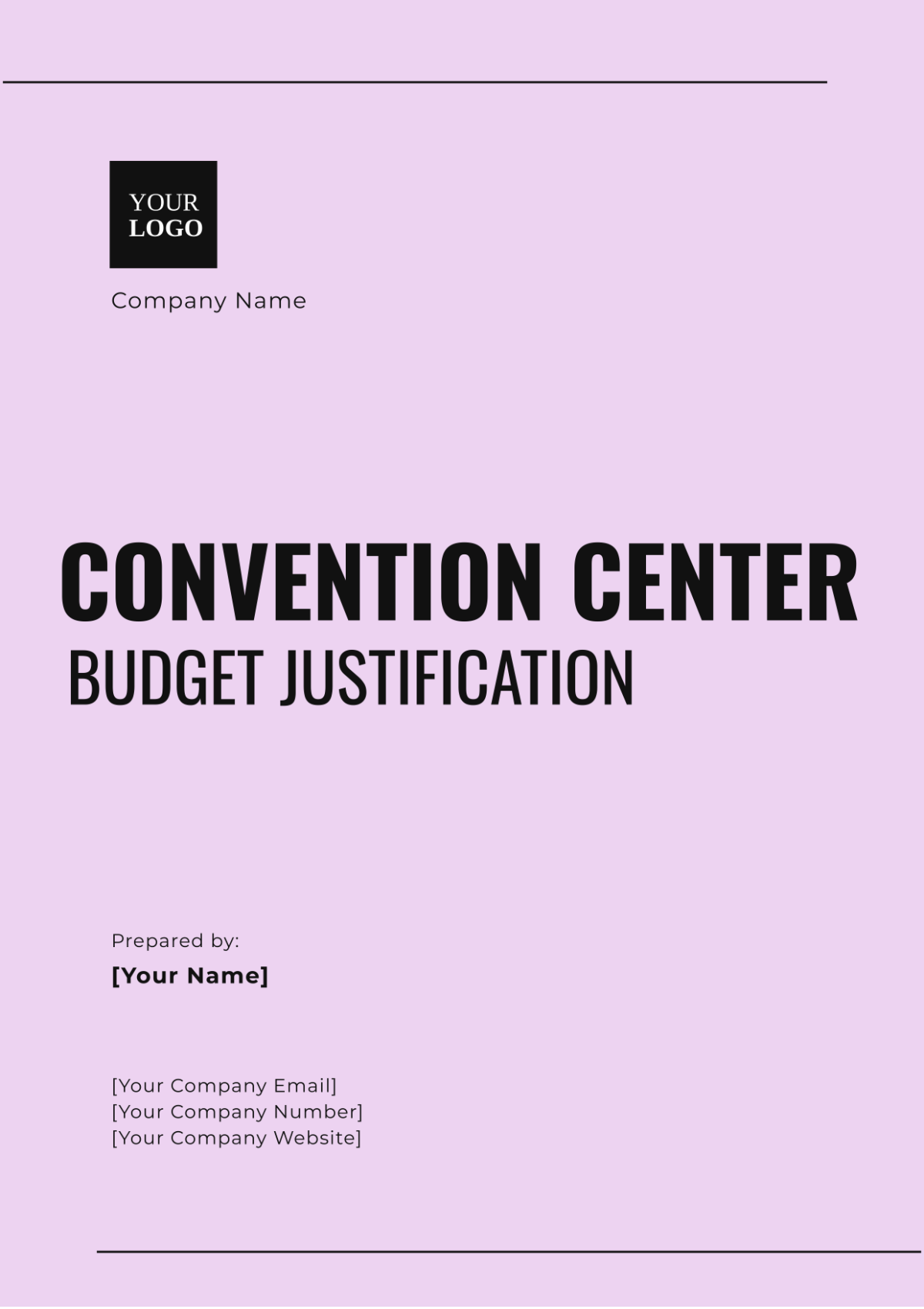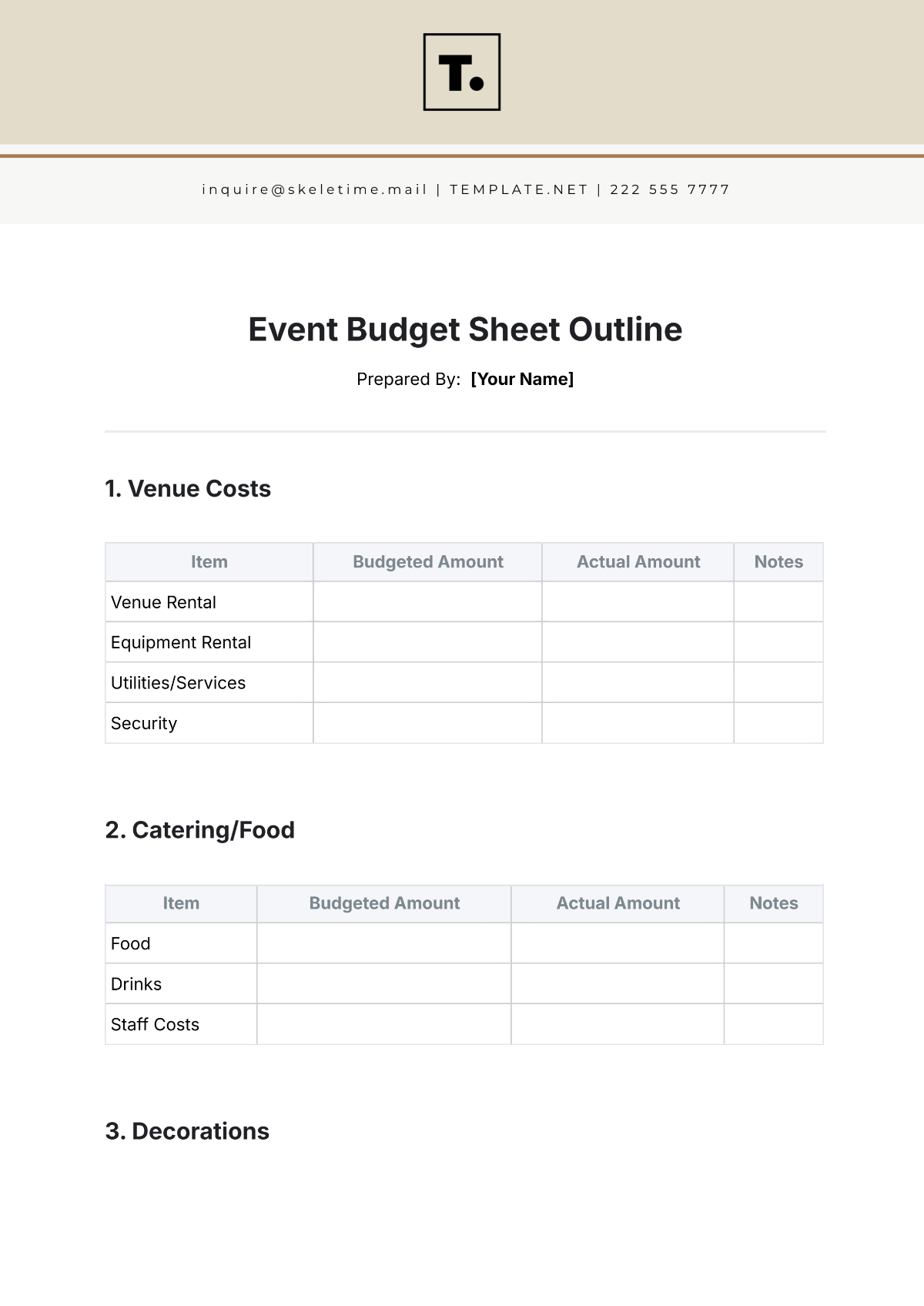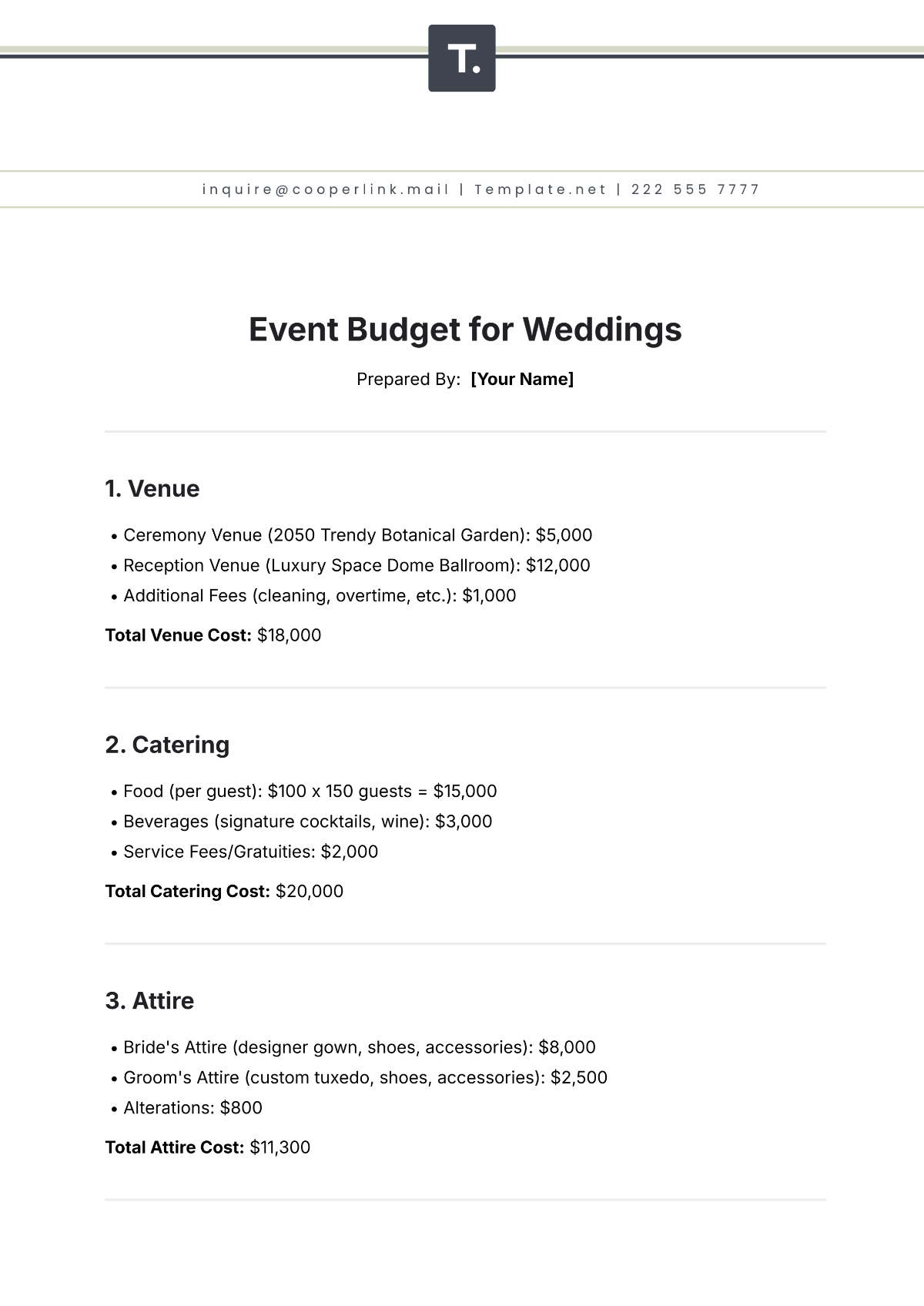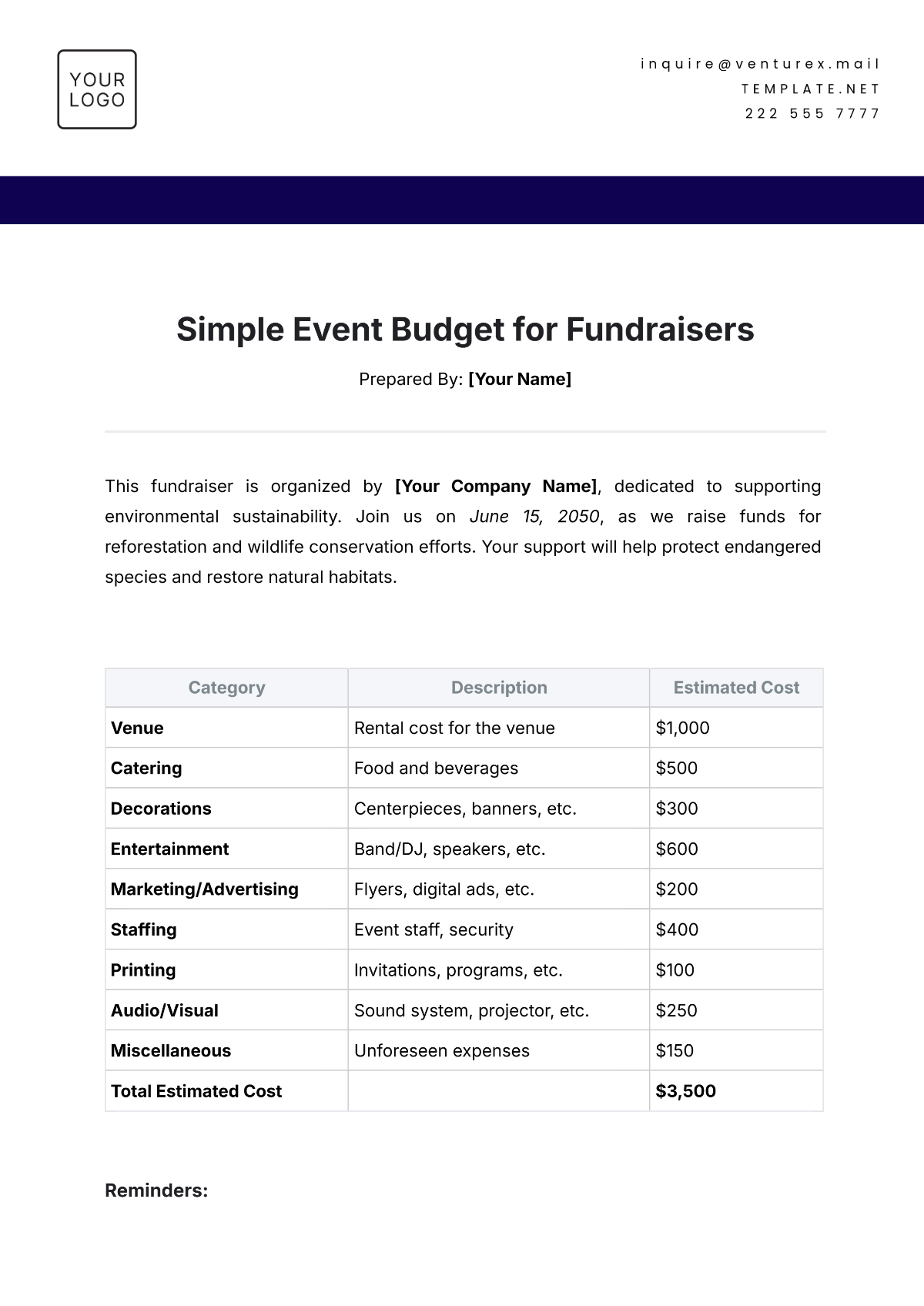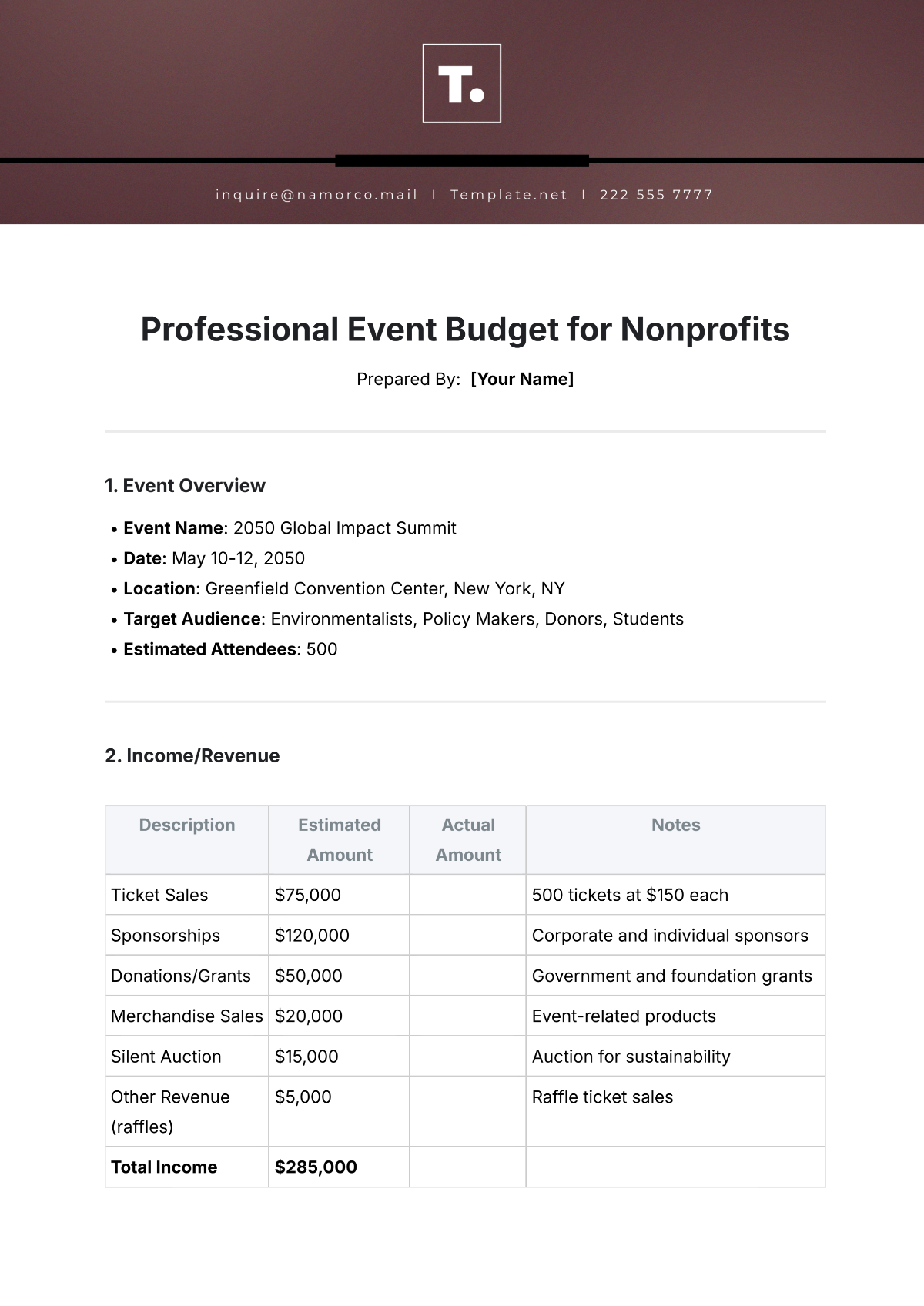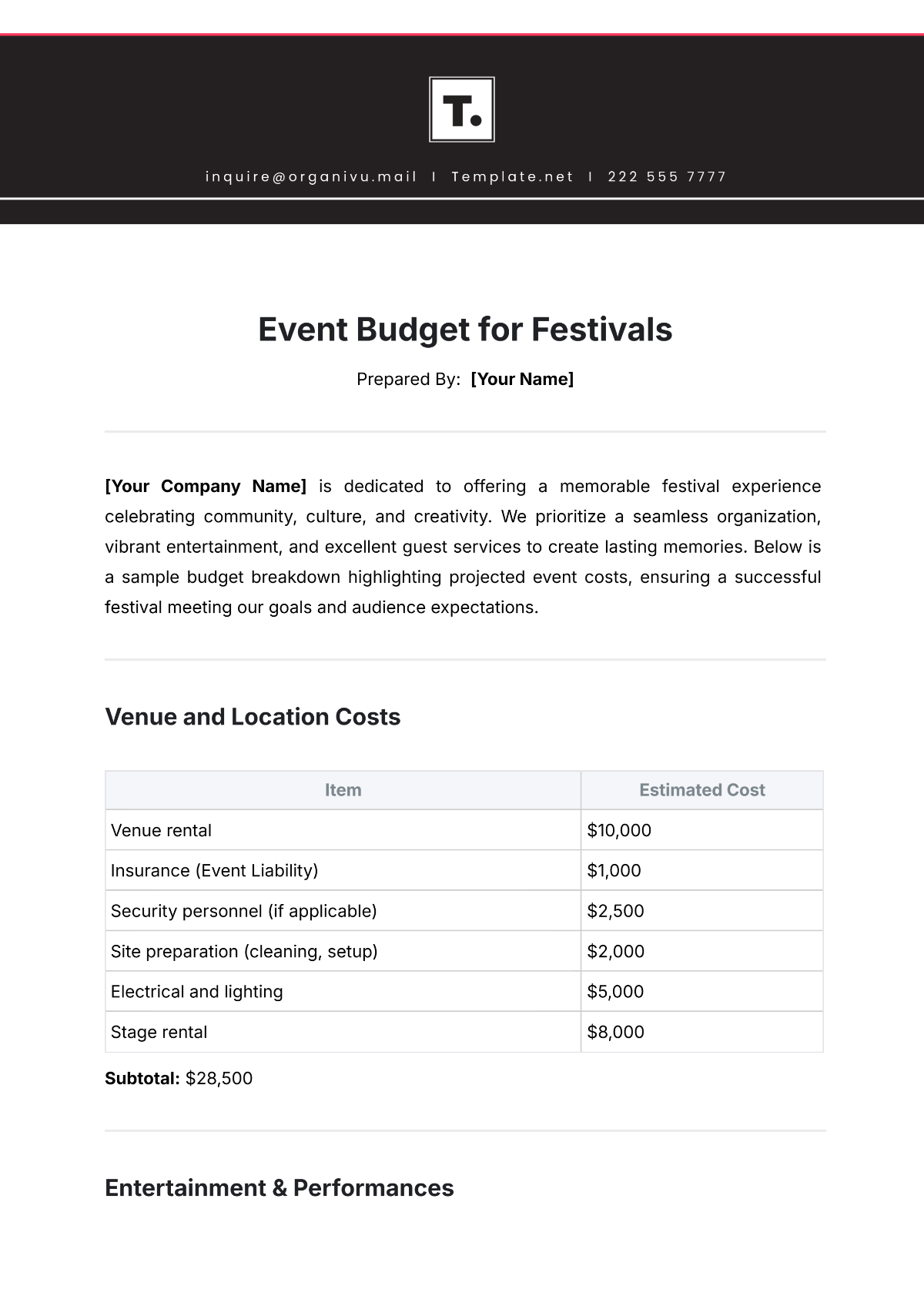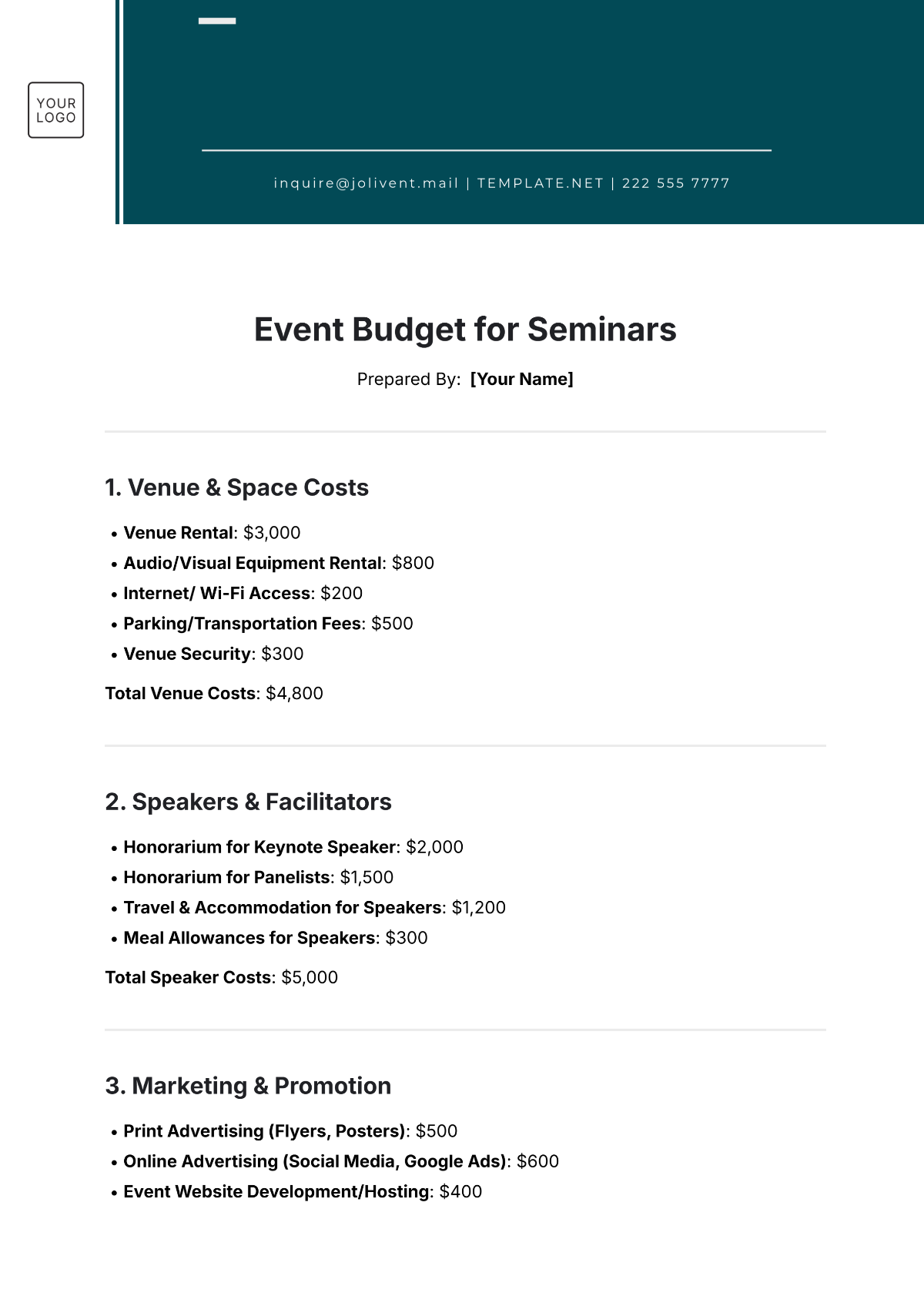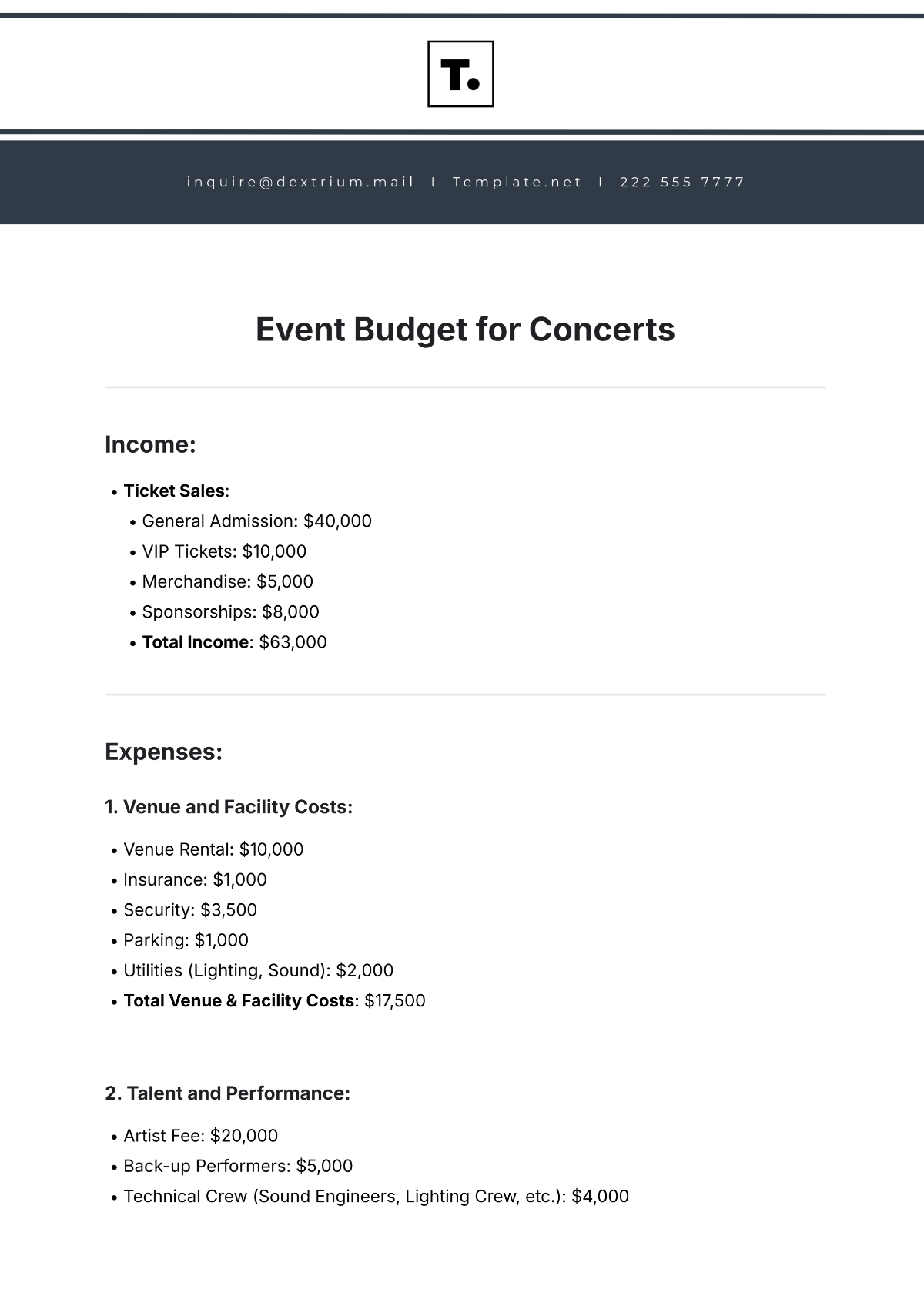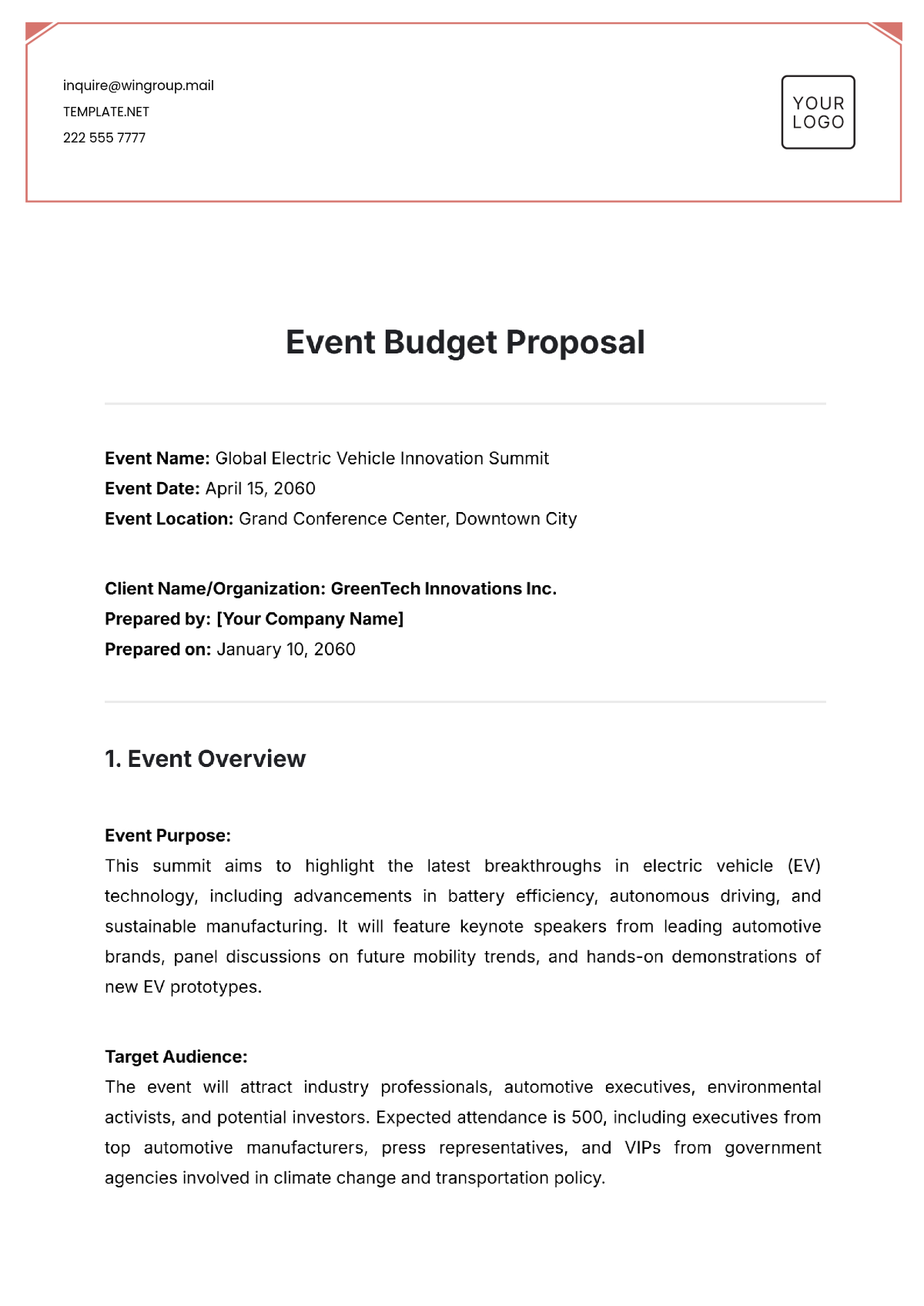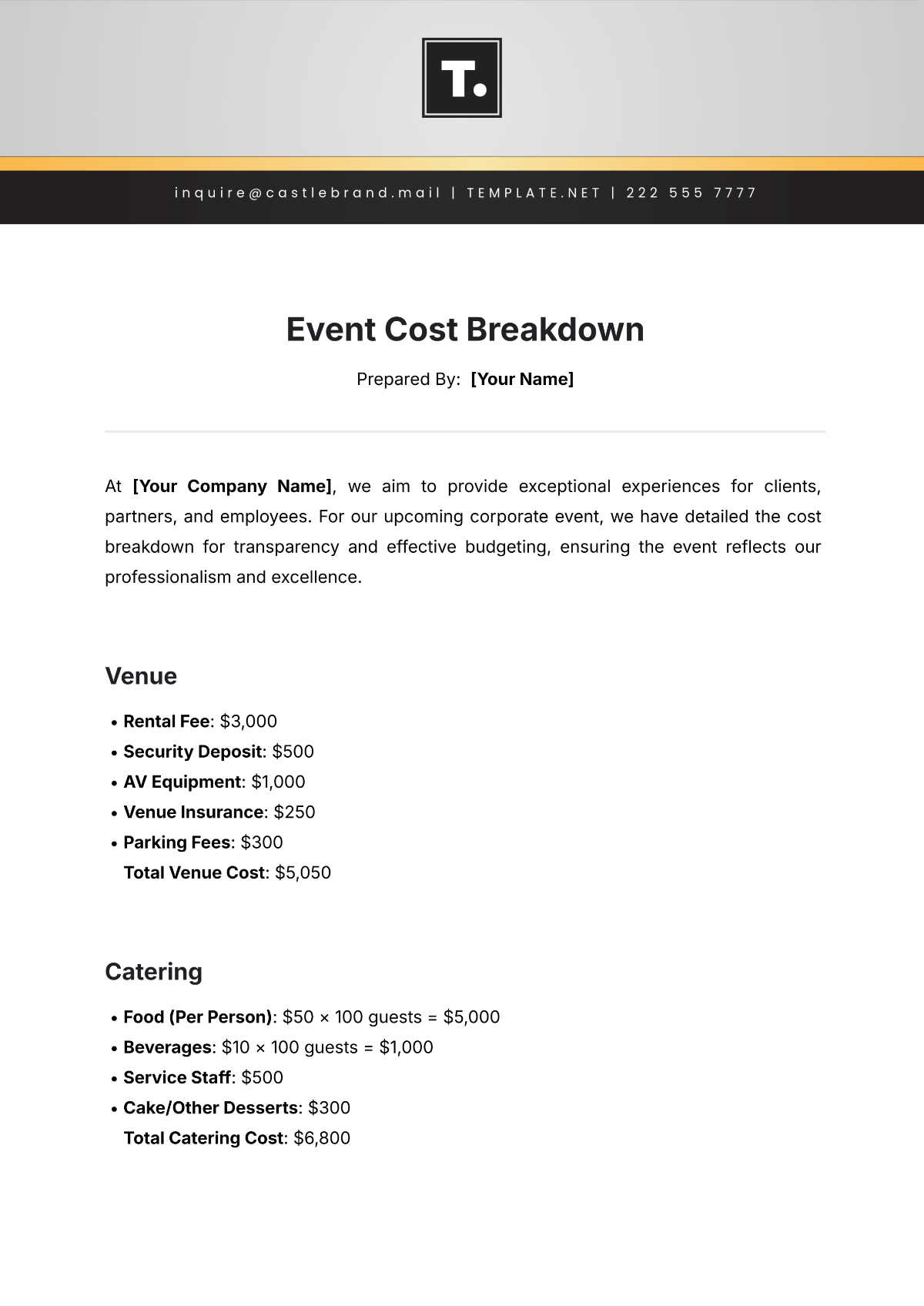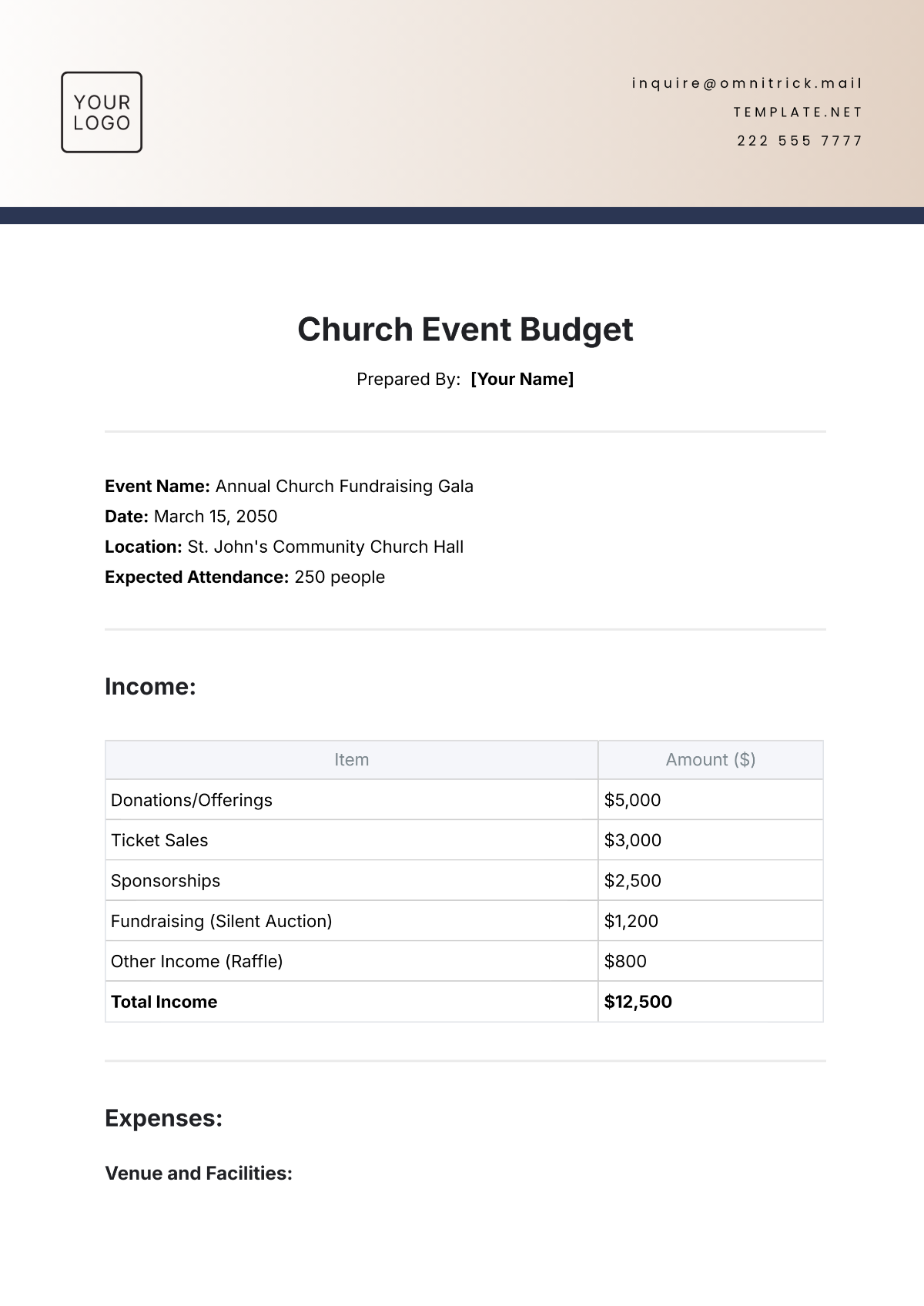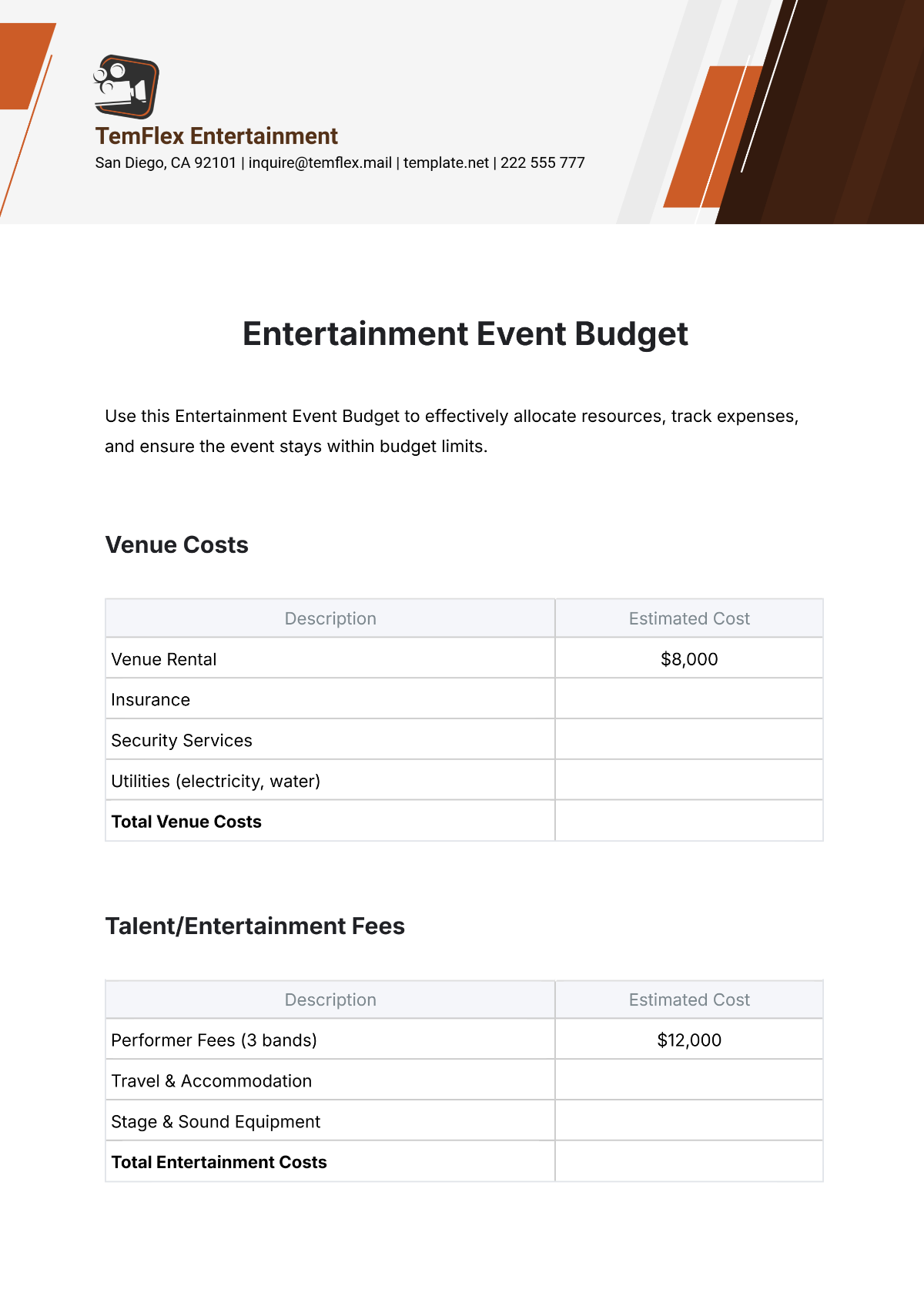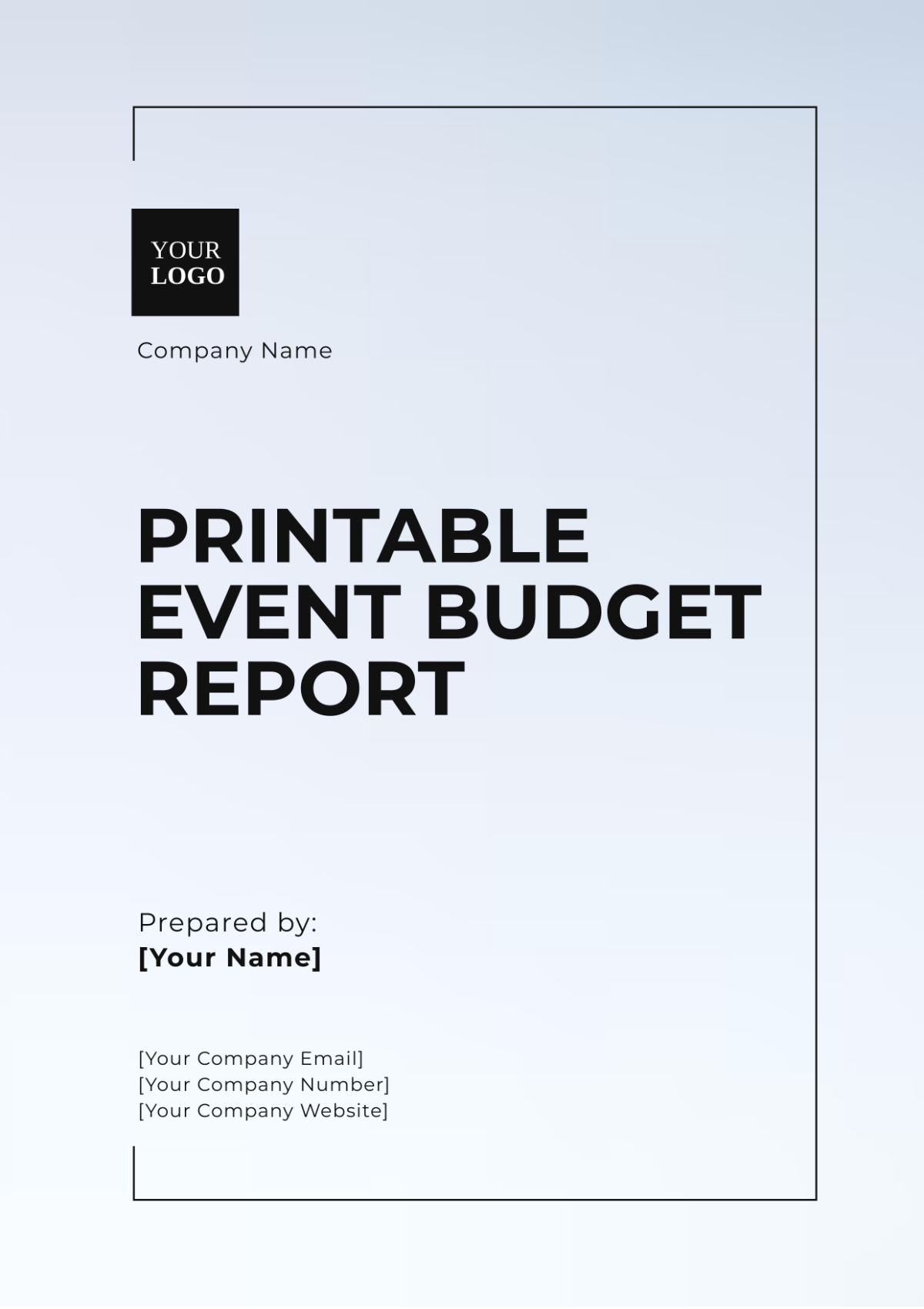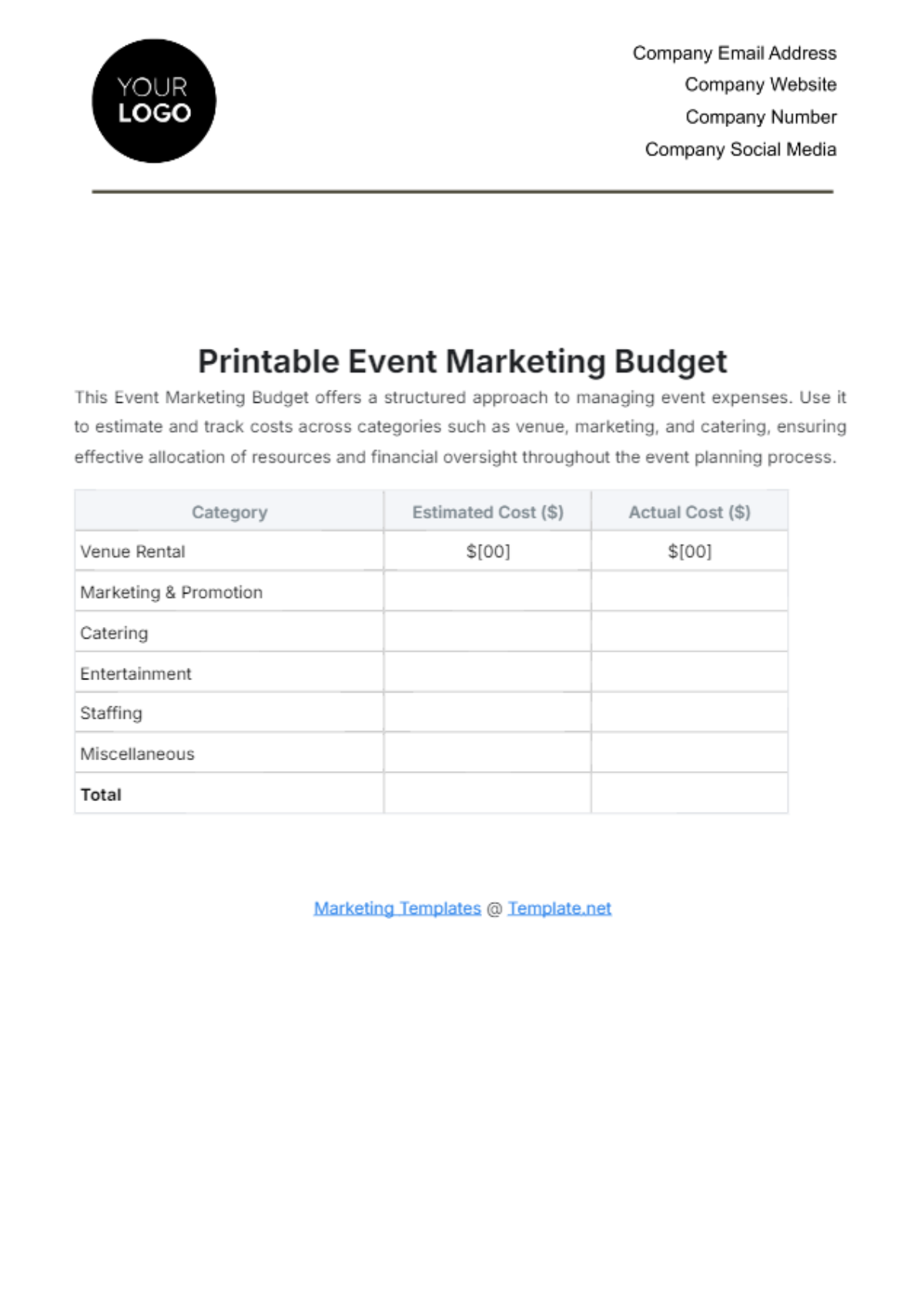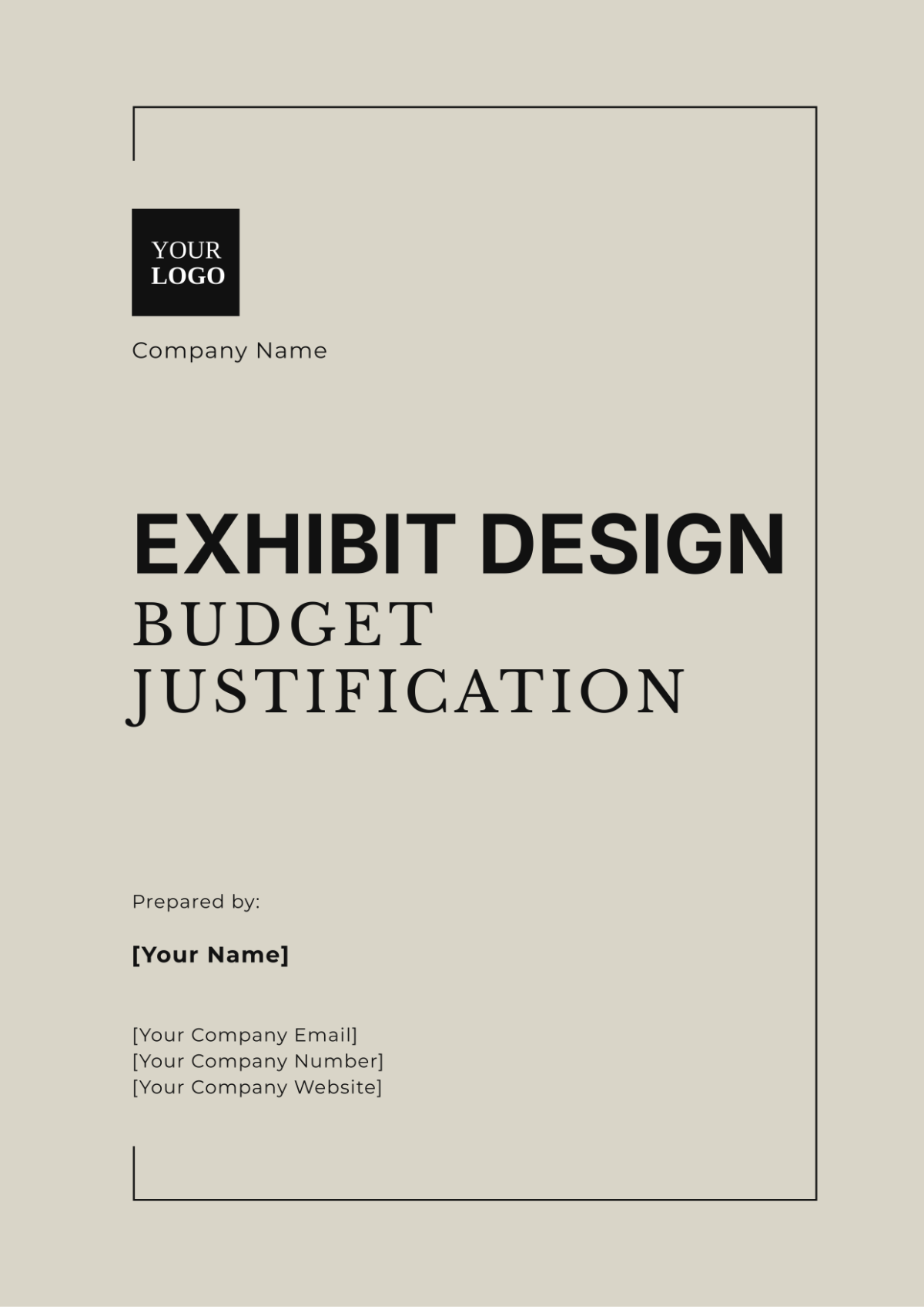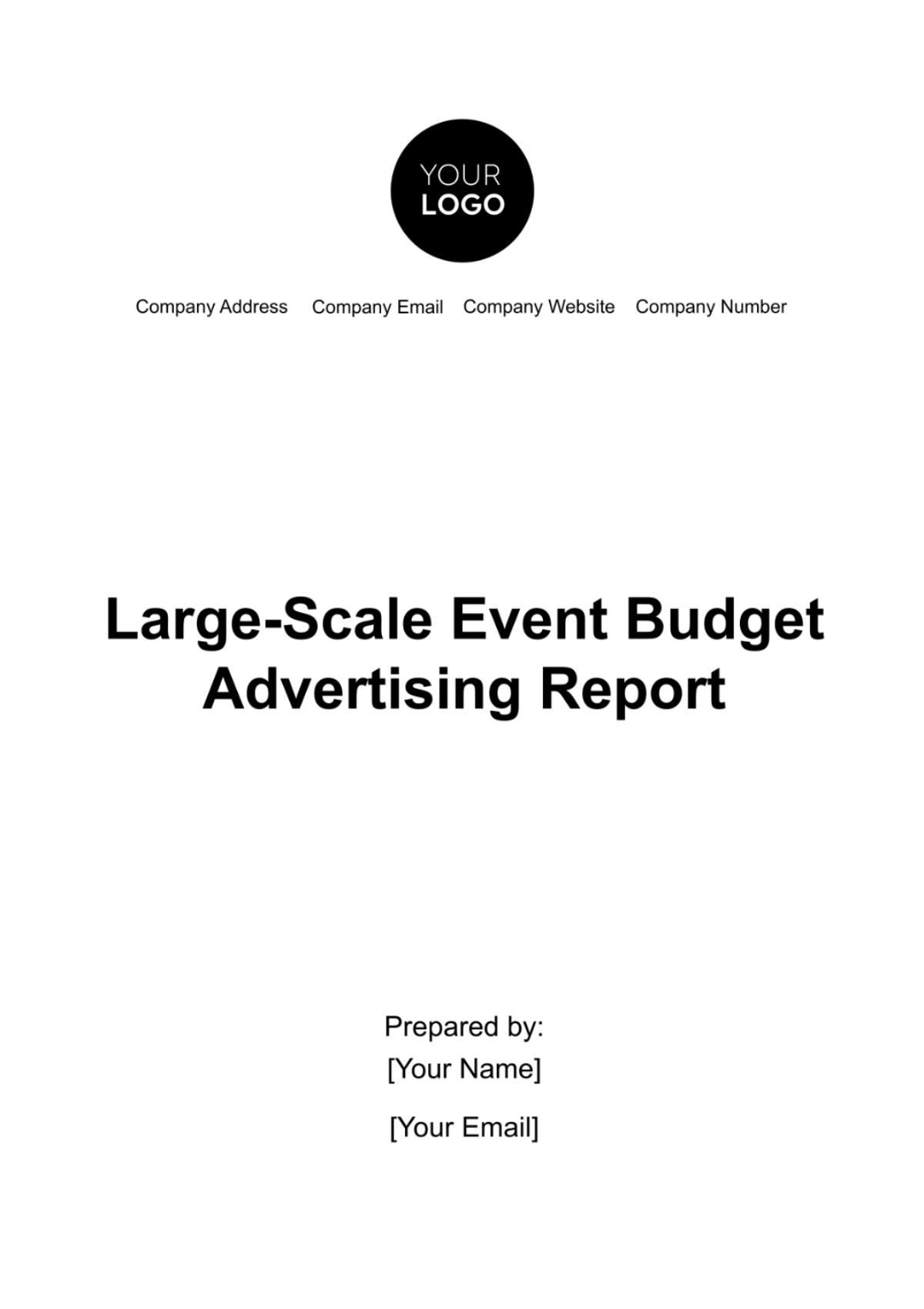Large-Scale Event Budget Advertising Report
I. Executive Summary
The report serves as a coverage of the forthcoming Large-Scale Event. This section introduces the event's core objectives, underscoring its unique value proposition and the anticipated impact it aims to achieve.
Objectives Of The Advertising Campaign
Within this segment, the objectives of the Advertising Campaign are delineated with precision. It articulates how the advertising endeavors align seamlessly with the broader goals of the event, emphasizing the creation of brand resonance, heightened audience engagement, and the generation of substantial interest and participation. Here are the objectives as follows:
Objectives of the Advertising Campaign |
Strengthen Internal Cohesion: Create a sense of unity and collective identity among employees, ensuring they feel connected to and proud of our brand. |
Enhance Brand Understanding: Increase awareness and understanding of our brand's values, mission, and strategic objectives among employees at all levels. |
Boost Employee Morale: Elevate employee morale and job satisfaction by recognizing individual and team contributions, reinforcing a positive work environment. |
Encourage Team Collaboration: Encourage cross-functional collaboration and knowledge-sharing by highlighting successful team achievements and projects. |
Align with Organizational Goals: Ensure every employee comprehends and aligns with our organizational goals, fostering a shared commitment to achieving long-term success |
Ignite Employee Ownership: Instill a sense of ownership and pride in being ambassadors of our brand, encouraging employees to actively contribute to our collective success. |
Promote Organizational Culture: Reinforce and celebrate our organizational culture, emphasizing key values and behaviors that define our workplace identity. |
Summary Of Key Budgetary Allocations
This subsection furnishes a concise breakdown of the budget, spotlighting the pivotal areas where financial resources are strategically allocated. The breakdown goes as follows:
Budget Categories | Estimated Cost (USD) |
Venue Rental | $100,500 |
Event Production | |
Audio-Visual Equipment | |
Catering Services | |
Marketing and Promotion | |
Decor and Signage | |
Speaker Fees and Travel | |
Attendee Materials | |
Security and Staffing | |
Transportation | |
Total Estimated Budget |
This table shows us the prioritized sectors, covering venue logistics, marketing endeavors, and the meticulous orchestration of personnel and operational facets.
II. Introduction
This Advertising Report serves as a startup towards more successful events. It covers advertising strategies and budgetary considerations, all in alignment with the overall goal of amplifying the event's reach, resonance, and impact.
Within this document, we will discuss the important details of the advertising campaign. While our focus is resolute, it's essential to acknowledge the inherent limitations. The report provides a comprehensive view, but it does not substitute real-time decision-making.
III. Budget Overview
The financial backbone of this endeavor revolves around a carefully planned budget, strategically allocated to ensure the seamless operation of the event. The total budget for the large-scale event originally stood at [$1,500,000], but a dedicated team of creatives and accountants came around and reduced the amount to a mere [$863,000], a modest figure that showed [Your Company Name]’s employees and stakeholders the resourceful might of the company.
Breakdown Of Major Expense Categories
Efficient financial management is paramount to the success of our event, and thus, a granular breakdown of major expense categories has been meticulously crafted. The following table provides a detailed overview of budget allocations:
Expense Category | Budget Allocation |
Venue and Logistics | [$130,000] |
Marketing and Advertising | |
Personnel and Operations |
A. Venue and Logistics
This segment covers the costs associated with securing a suitable venue and managing logistics. The allocated budget of [$130,000] reflects our commitment to providing an exceptional event experience.
B. Marketing and Advertising
Central to the event's success is an impactful marketing and advertising strategy. The budget allocation of [$560,000] is distributed across diverse channels to maximize visibility and engagement.
IV. Advertising Strategy
The Advertising Strategy section constitutes a pivotal component of our comprehensive plan, defining a multi-faceted approach to maximize the reach and impact of our campaign. Through a learned and balanced integration of digital and traditional channels, we aimed to create a cohesive and resonant narrative that captivates our target audience.
Digital Advertising
A. Social Media Campaigns
Our digital front is fortified by a distinct Social Media Campaign, strategically designed to harness the expansive reach of platforms such as Facebook, Instagram, and Twitter. Leveraging engaging content, targeted advertisements, and real-time interactions, we aim to cultivate a dynamic online community while amplifying brand visibility.
B. Email Marketing
The Email Marketing segment serves as a personalized conduit, delivering tailored content directly to the inboxes of our audience. Through strategically timed and curated communications, we intend to nurture relationships, disseminate event highlights, and drive anticipation.
Traditional Advertising
A. Print Media
The Print Media facet harnesses the enduring power of tangible publications. By strategically placing advertisements in key print outlets, we seek to engage a demographic that values the tactile experience of traditional media, thereby ensuring a comprehensive and inclusive reach.
B. Radio And Television
The auditory and visual realms of Radio and Television offer a dynamic canvas for storytelling. Through carefully crafted audio-visual advertisements, we aim to evoke emotions and establish a memorable connection with our audience, transcending the limitations of print and digital media.
C. Outdoor Advertising
Our goal is to dominate physical spaces with impactful visuals. Billboards, transit displays, and strategically placed banners will serve as omnipresent reminders, creating a pervasive presence in the physical landscape.
V. Cost Estimates
In this section, we delve into the intricate details of cost estimates, aiming to provide a transparent breakdown of financial allocations within the advertising domain. The meticulous planning of expenses is paramount to the overall success of the event's advertising campaign.
A. Production Costs
Production costs constitute a foundational element of the budget, encompassing expenses related to the creation of advertising materials. This includes but is not limited to graphic design, copywriting, and multimedia production. Detailed estimates for each component are presented below:
Item | Estimated Cost |
Graphic Design | [$8,000] |
Copywriting | |
Multimedia Production |
B. Media Buying
Media buying involves the strategic acquisition of advertising space across various channels. A distribution of funds is imperative for optimizing reach and engagement. The following table provides an estimate of costs associated with media buying:
Advertising Channel | Estimated Cost |
Social Media | [$25,000] |
Search Engine | |
Print Media | |
Radio And Television | |
Outdoor Advertising |
C. Creative Development
Creative development involves the refinement and adaptation of advertising materials to align with the unique characteristics of each platform. The breakdown of estimated costs for this vital aspect is outlined below:
Creative Element | Estimated Cost |
Digital Ad Creatives | [$10,000] |
Traditional Ad Creatives |
VI. ROI Projections
In this section, we delve into the anticipated Return on Investment (ROI) for each advertising channel, employing a methodical approach that amalgamates historical data analysis, consideration of prevailing market trends, and benchmarking against industry standards. Our goal is to provide stakeholders with a realistic forecast of the expected returns from the advertising investments.
A. Historical Data Analysis
We carefully examined past performance metrics, drawing correlations between advertising efforts and subsequent ROI. This retrospective examination serves as a foundational element in predicting future returns.
B. Market Trends Impacting ROI
An in-depth analysis of current market trends guides our projections, acknowledging the dynamic nature of consumer behavior and technological advancements. By aligning advertising strategies with contemporary trends, we aim to capitalize on emerging opportunities and mitigate potential challenges, thereby optimizing the overall ROI.
C. Industry Benchmarks
Drawing insights from established industry benchmarks, we establish a comparative framework to gauge the competitiveness and efficacy of our advertising strategies. This benchmarking process aids in setting realistic expectations and ensures that our ROI projections are anchored in industry standards.
The culmination of our ROI projections offers valuable insights into the expected impact of the advertising campaign. As we go through this section, stakeholders will gain a new form of understanding about the financial outcomes and be equipped to make informed decisions.
VII. Timeline
The Pre-Event Advertising Schedule details out a meticulously crafted timeline, strategically aligning advertising activities leading up to the grand-scale event. This section provides a clear and concise roadmap, outlining key milestones and deliverables to ensure a synchronized and impactful pre-event promotional campaign.
Pre-Event Advertising Schedule | |
Time frame | Actions |
[12-16 Weeks Before Event] |
|
Event Day Advertising Activities
This segment details the intricacies of Event Day Advertising, presenting a streamlined timeline for the deployment of advertising strategies during the event itself.
Event Day Advertising Activities | |
Event Schedule | Activities |
Morning Kick-off |
|
This table outlines advertising activities during the day of a large-scale event hosted by [Your Company Name].
VIII. Risk Assessment
Identification Of Potential Risks
A. External Factors
The identification of potential risks covers a thorough examination of external factors that could impede the success of the advertising campaign. This involves an analysis of market dynamics, competitor activities, and any unforeseen events that may impact the event's overall reception.
B. Internal Factors
Equally critical is the assessment of internal factors, including operational challenges, resource constraints, and potential human errors. By scrutinizing internal processes, we aim to preemptively address any issues that could disrupt the seamless execution of the advertising strategy.
Mitigation Strategies
A.Risk Mitigation Plan
A strong risk mitigation plan is essential to counteract identified risks effectively. This section outlines specific strategies and actions to be taken to minimize the impact of potential challenges. These strategies are tailored to address each risk category and are designed to ensure adaptability in the face of uncertainties.
B. Communication Protocols
Effective communication is paramount during times of uncertainty. This part of the report details the established communication protocols to facilitate swift and accurate information dissemination in response to identified risks. Clearly defined channels and escalation procedures are outlined to ensure a coordinated and efficient response.
IX. Metrics And KPIs
In this section, we define the key metrics and KPIs crucial for evaluating the effectiveness of the advertising campaign. The selected metrics have been strategically chosen to provide a comprehensive understanding of the campaign's impact across various channels.
A. Engagement Metric
Impressions: Quantifies the total number of times the ad is displayed, gauging initial audience reach.
Click-Through Rates (CTR): Measures the percentage of users who clicked on the ad, indicating engagement beyond mere impressions.
Conversion Rates: Evaluates the ratio of users who took the desired action, providing insights into the campaign's conversion effectiveness.
To facilitate efficient data collection and analysis, we leveraged cutting-edge measurement and analysis tools. These tools enable real-time tracking and reporting, allowing for dynamic adjustments to maximize campaign performance.
X. Contingency Planning
The Contingency Planning section serves as a strategic blueprint for navigating unexpected circumstances, ensuring the resilience and adaptability of the advertising campaign.
A. Response To Unforeseen Circumstances
In the event of unforeseen challenges, a swift and effective response is imperative. This section outlines predefined protocols and response mechanisms to address emergent issues, minimizing their impact on the advertising campaign and the overall success of the event.
B. Adaptive Strategies For Real-Time Optimization
To proactively address uncertainties, this subsection presents adaptive strategies for real-time optimization. By leveraging monitoring tools and feedback mechanisms, the advertising campaign can be dynamically adjusted, ensuring responsiveness to evolving situations and maximizing impact.
XI. Conclusion
This report has systematically cleared up the details of our Large-Scale Event Budget Advertising strategy. Its content encapsulates not just the financial logistics but the strategic foresight and adaptability required to make our event a triumph. Let this report serve as a guide, empowering our team to navigate the complexities of advertising with confidence and precision.

